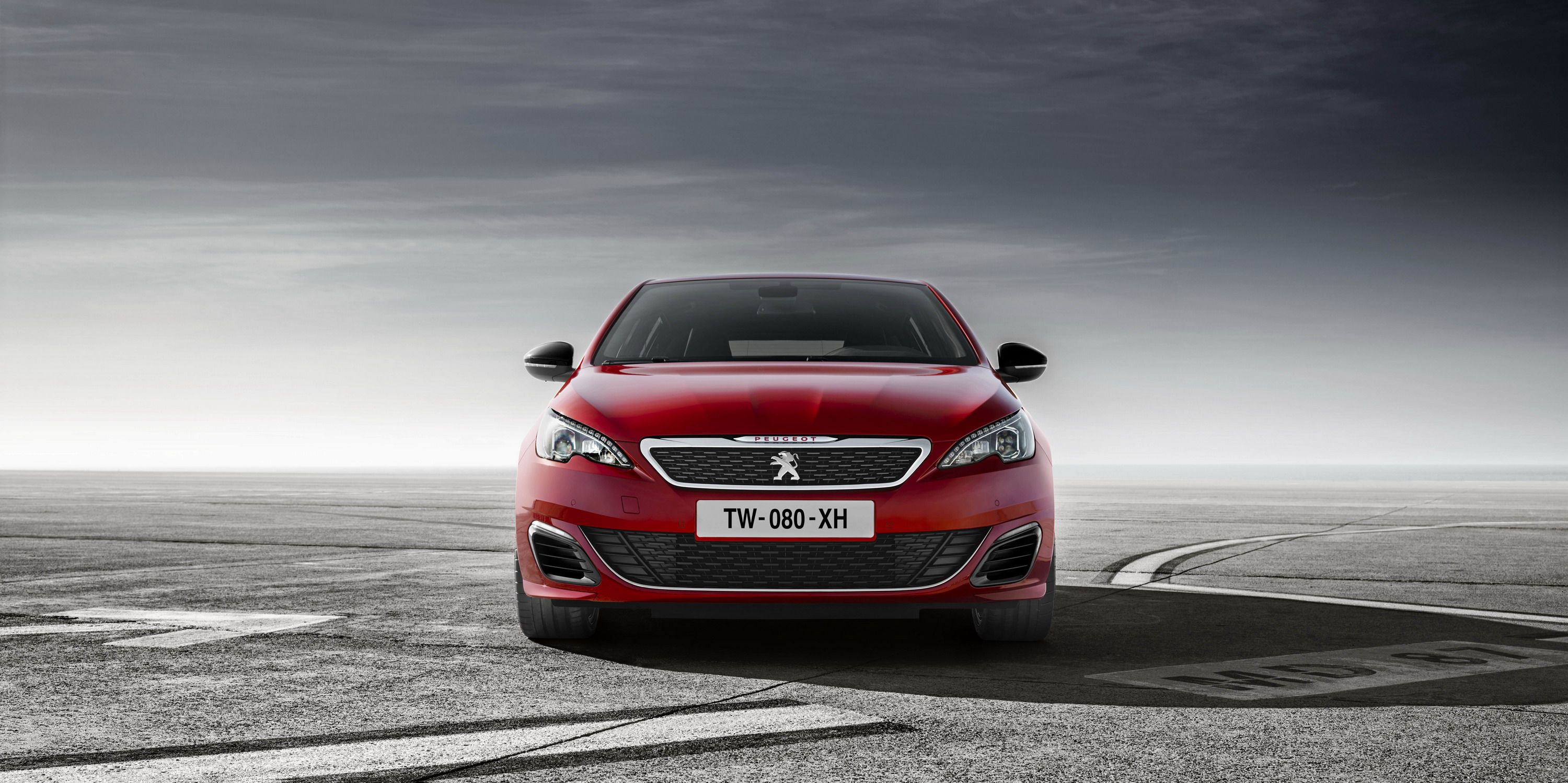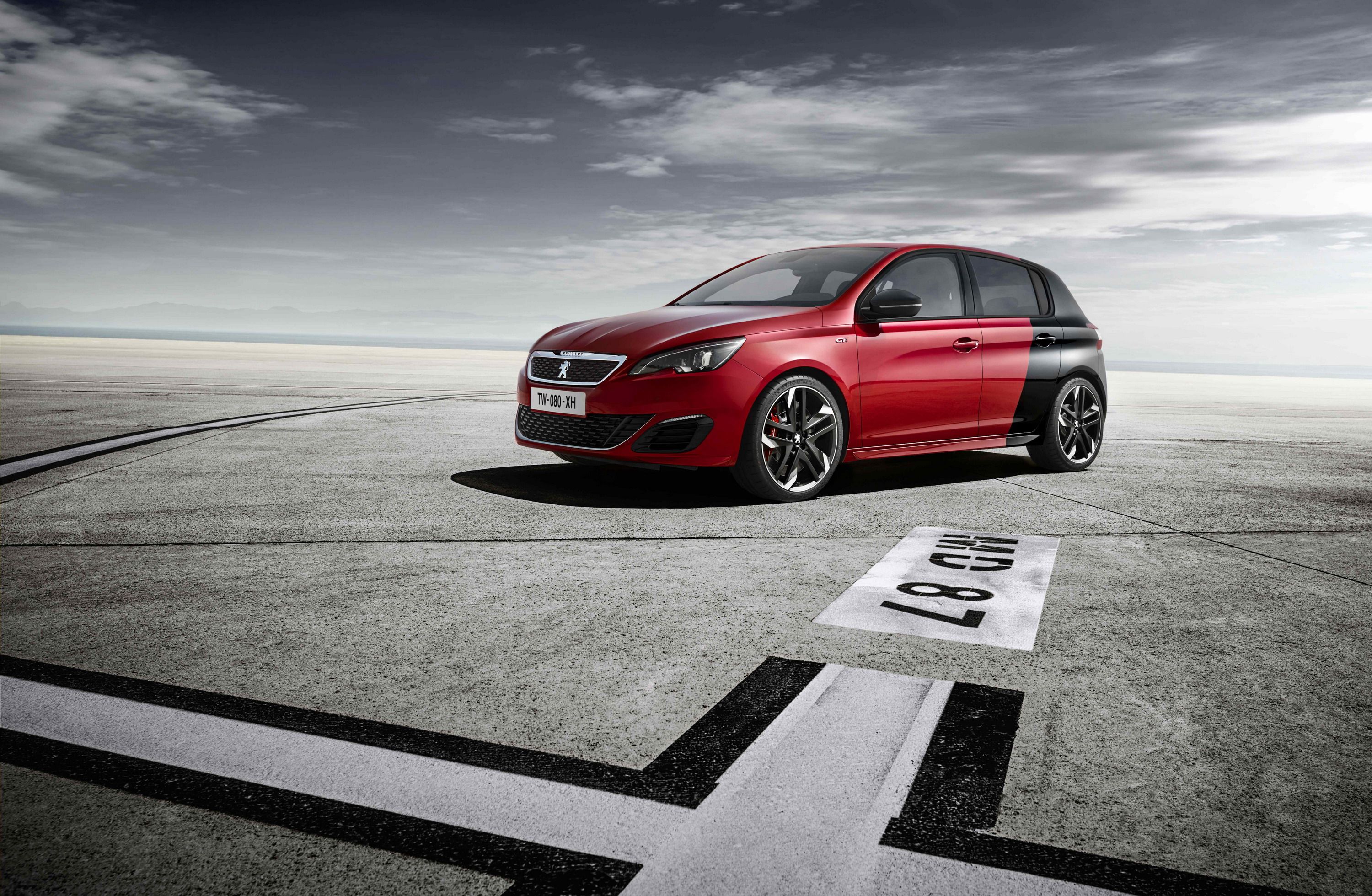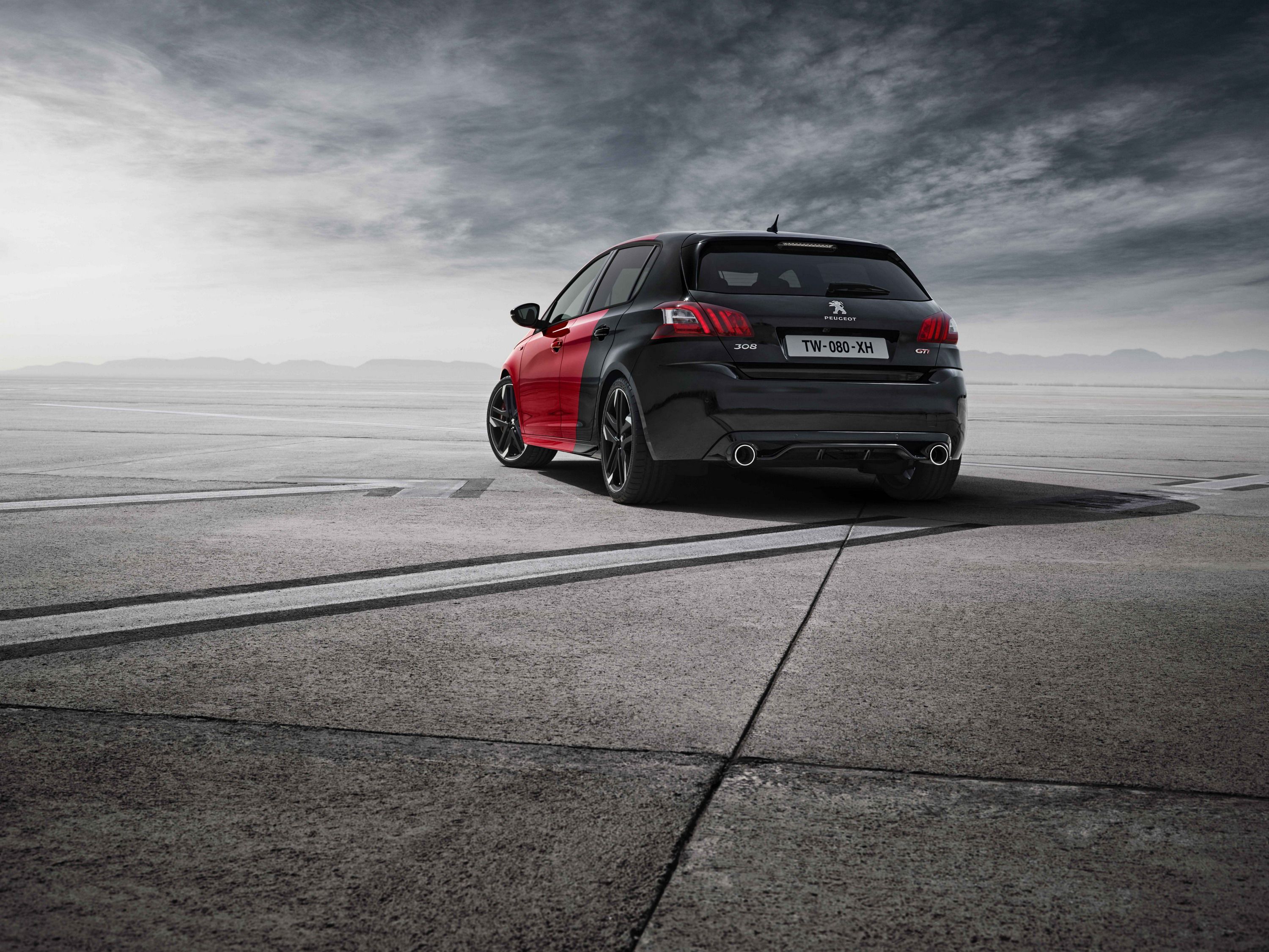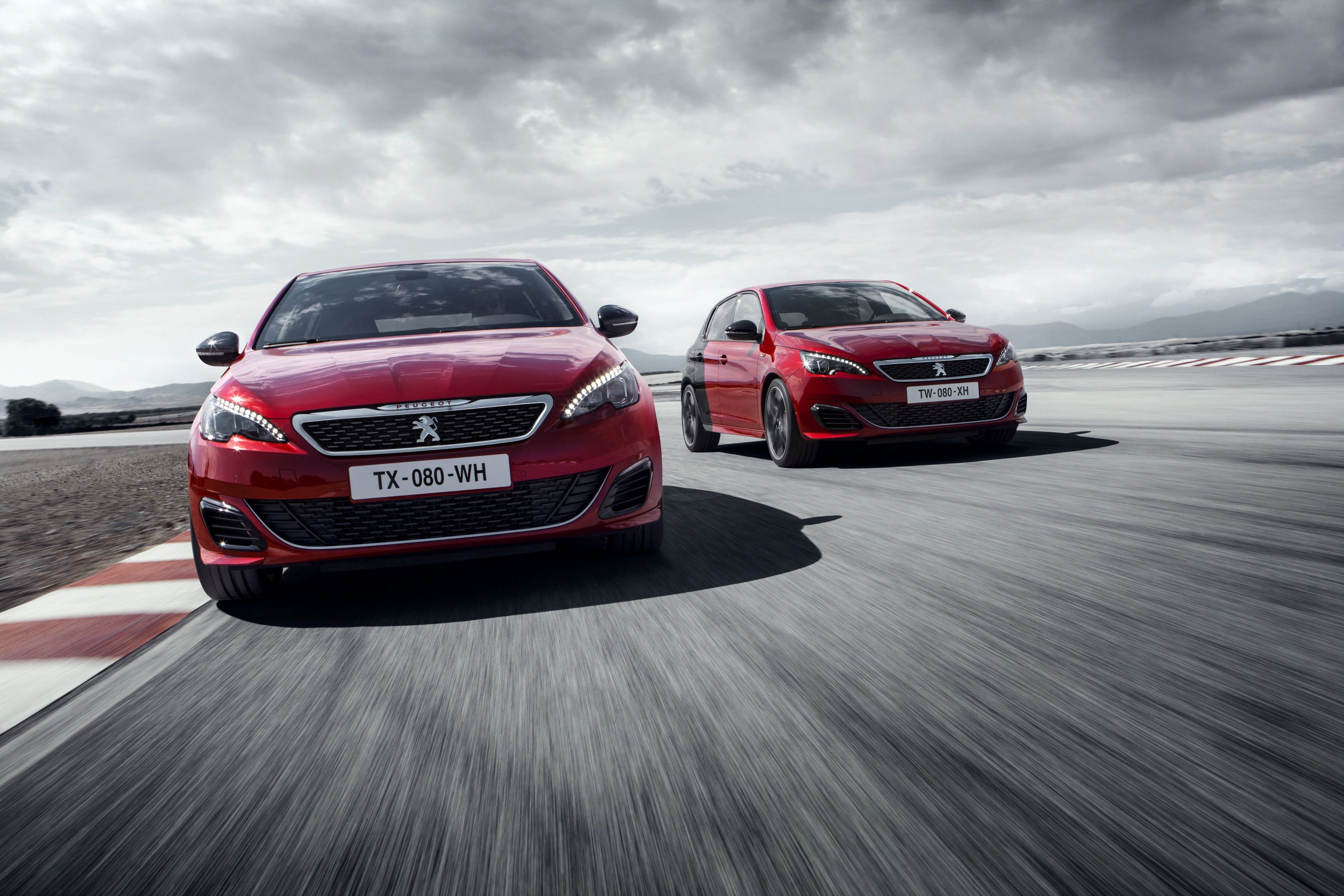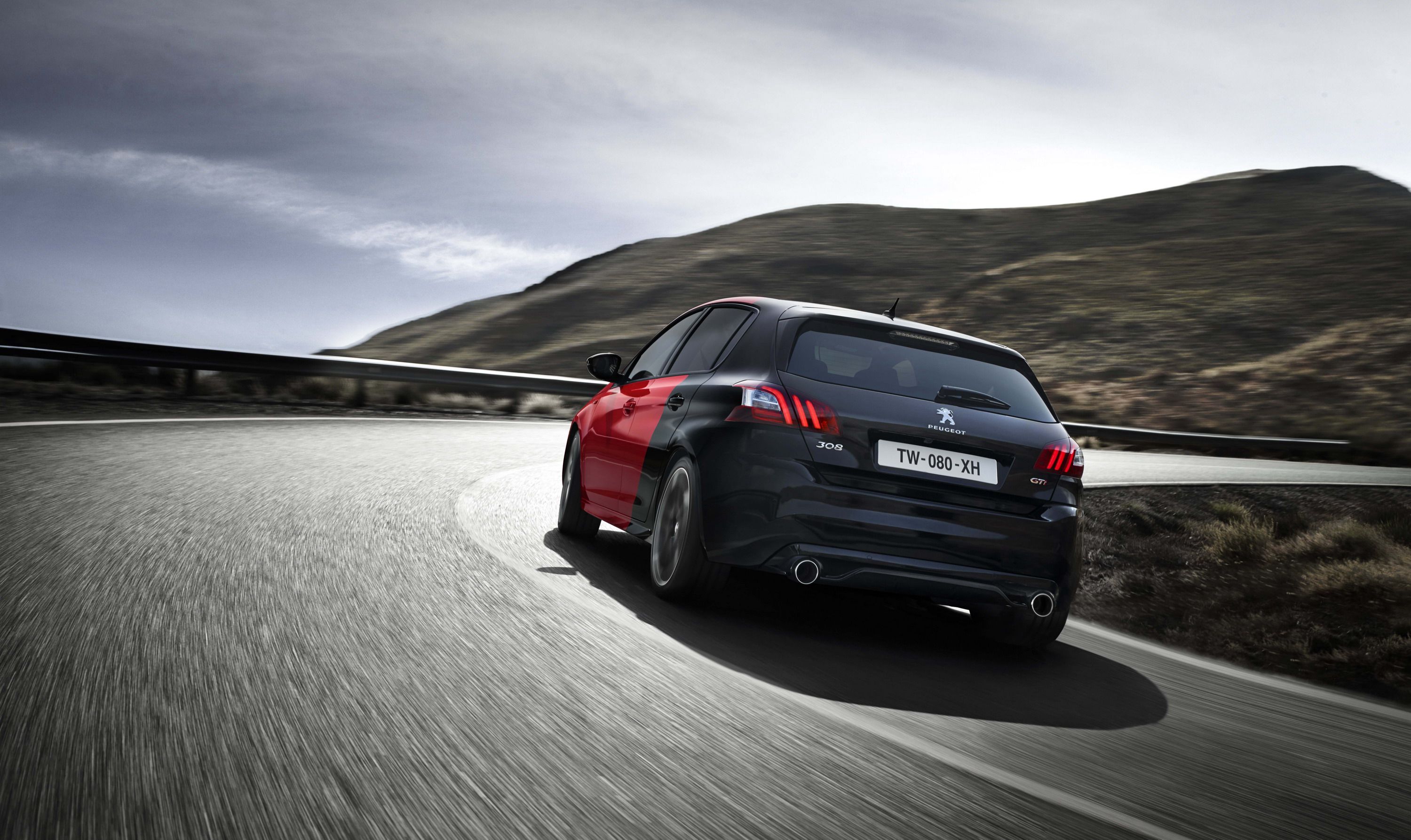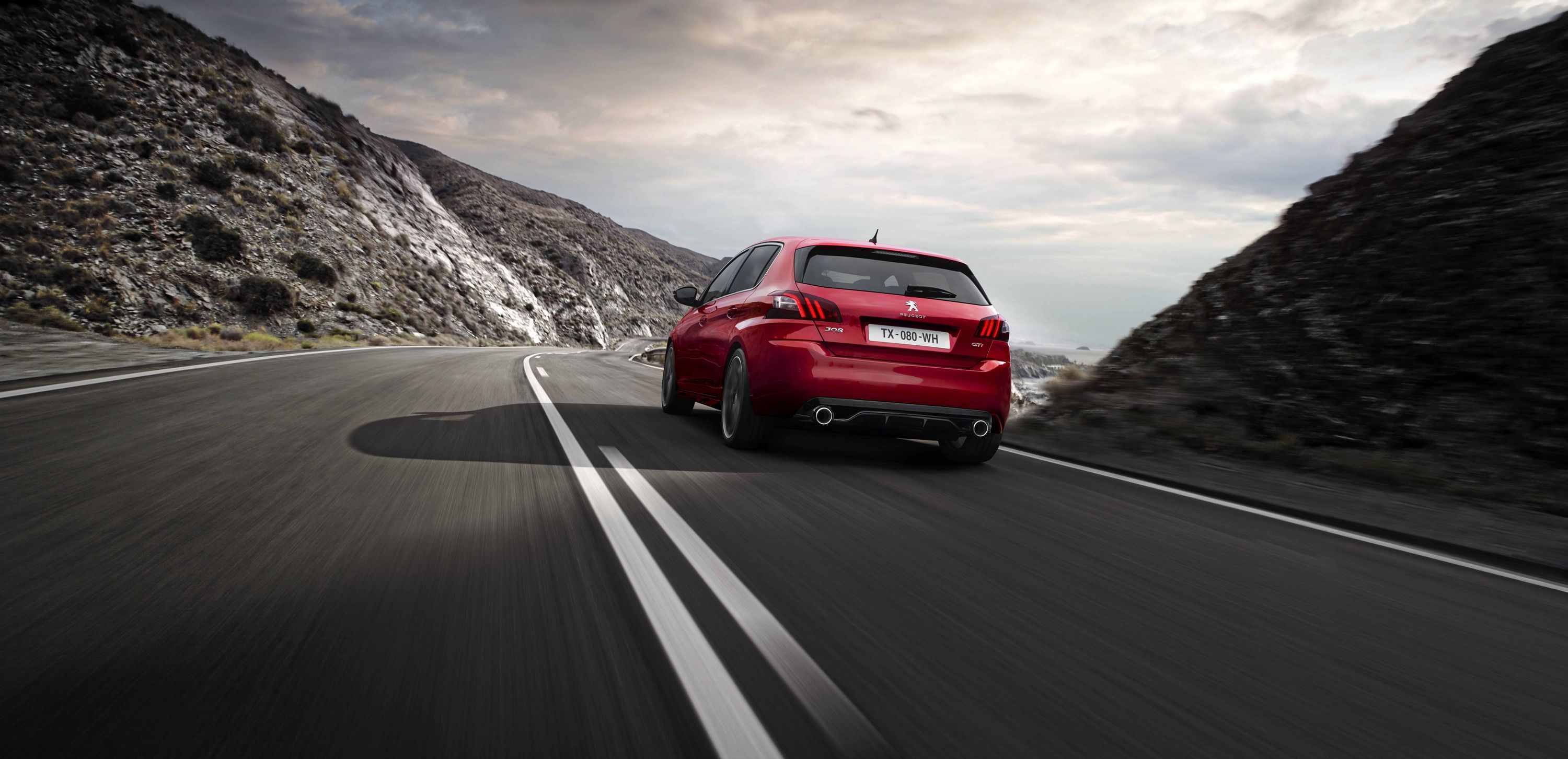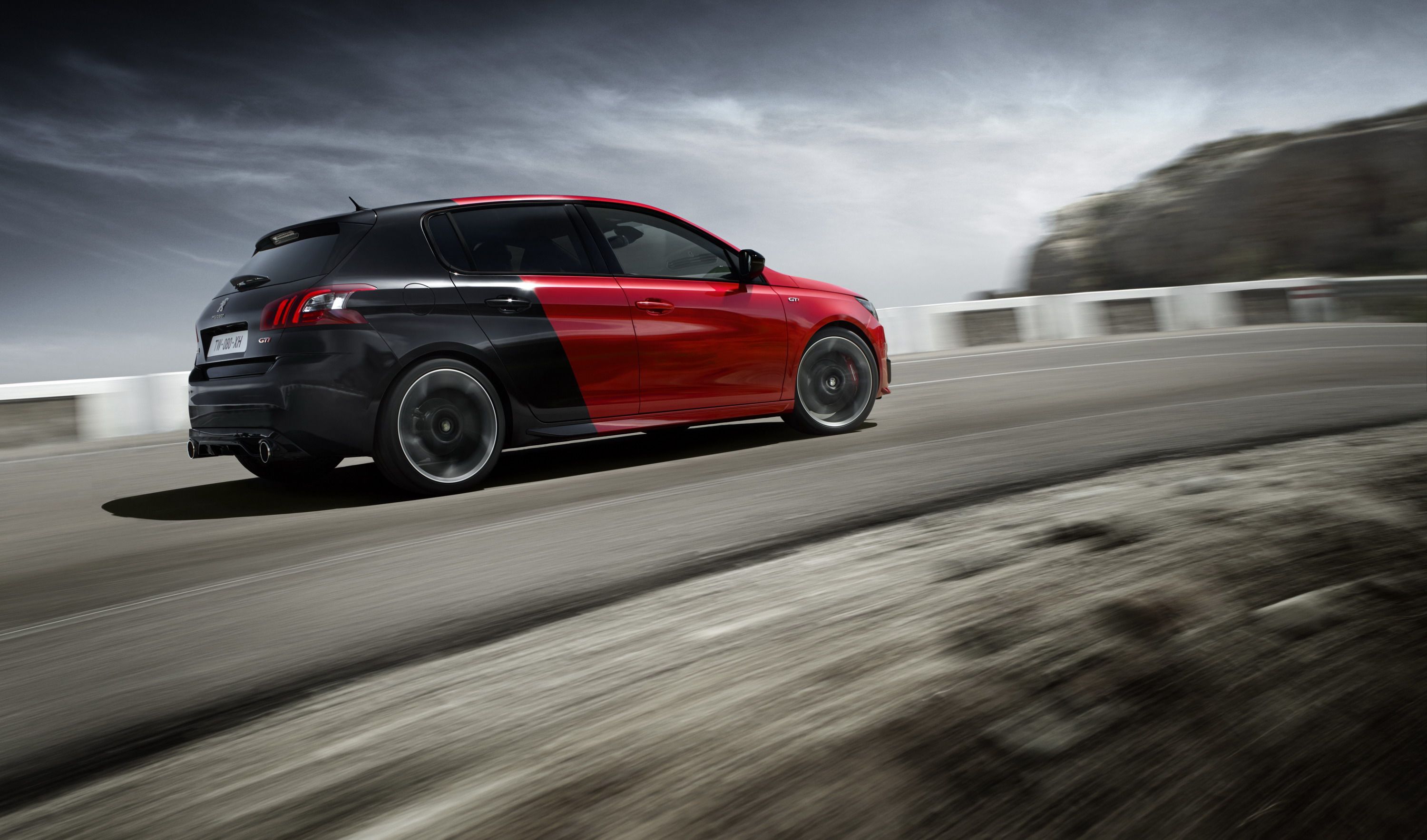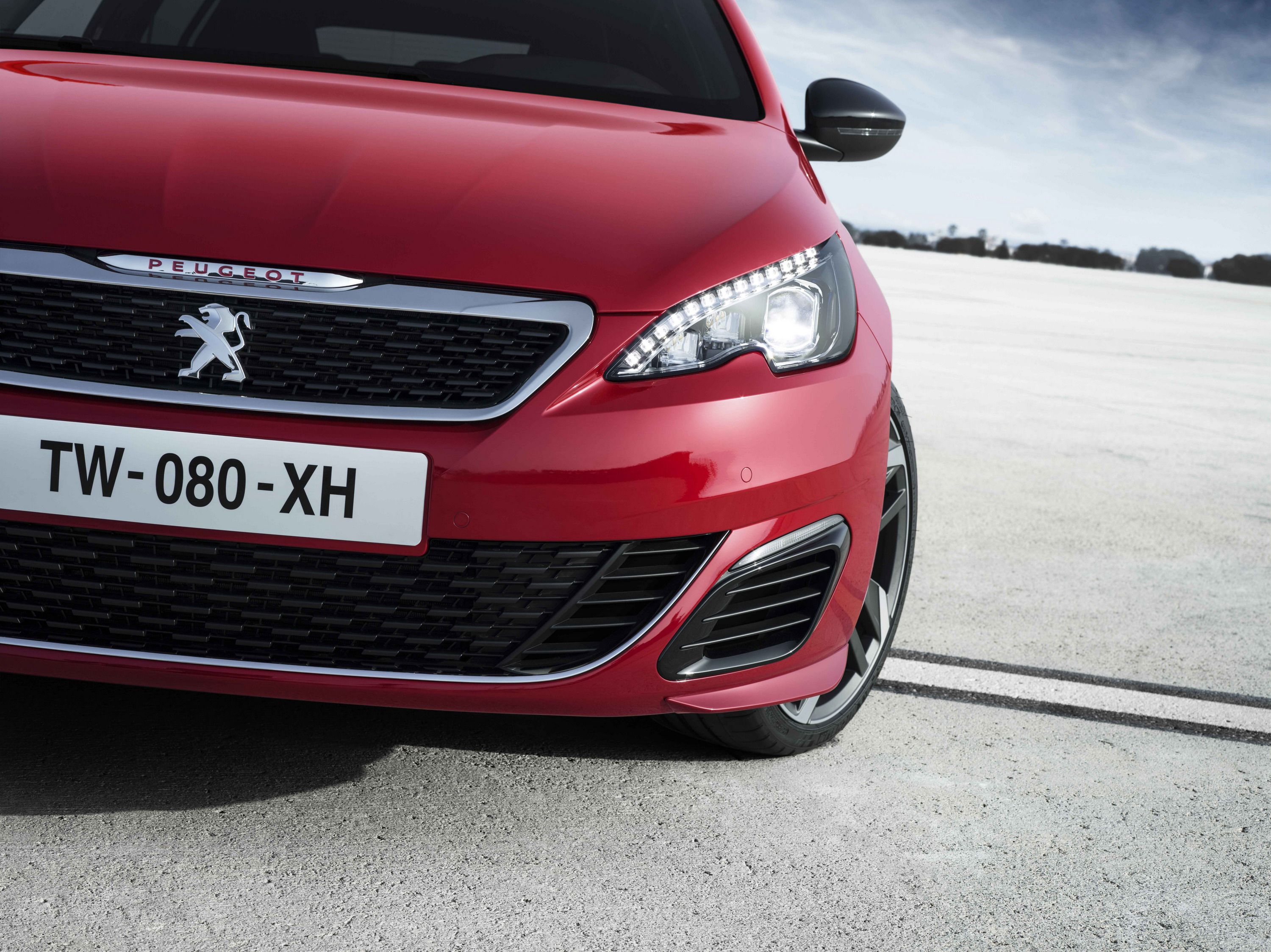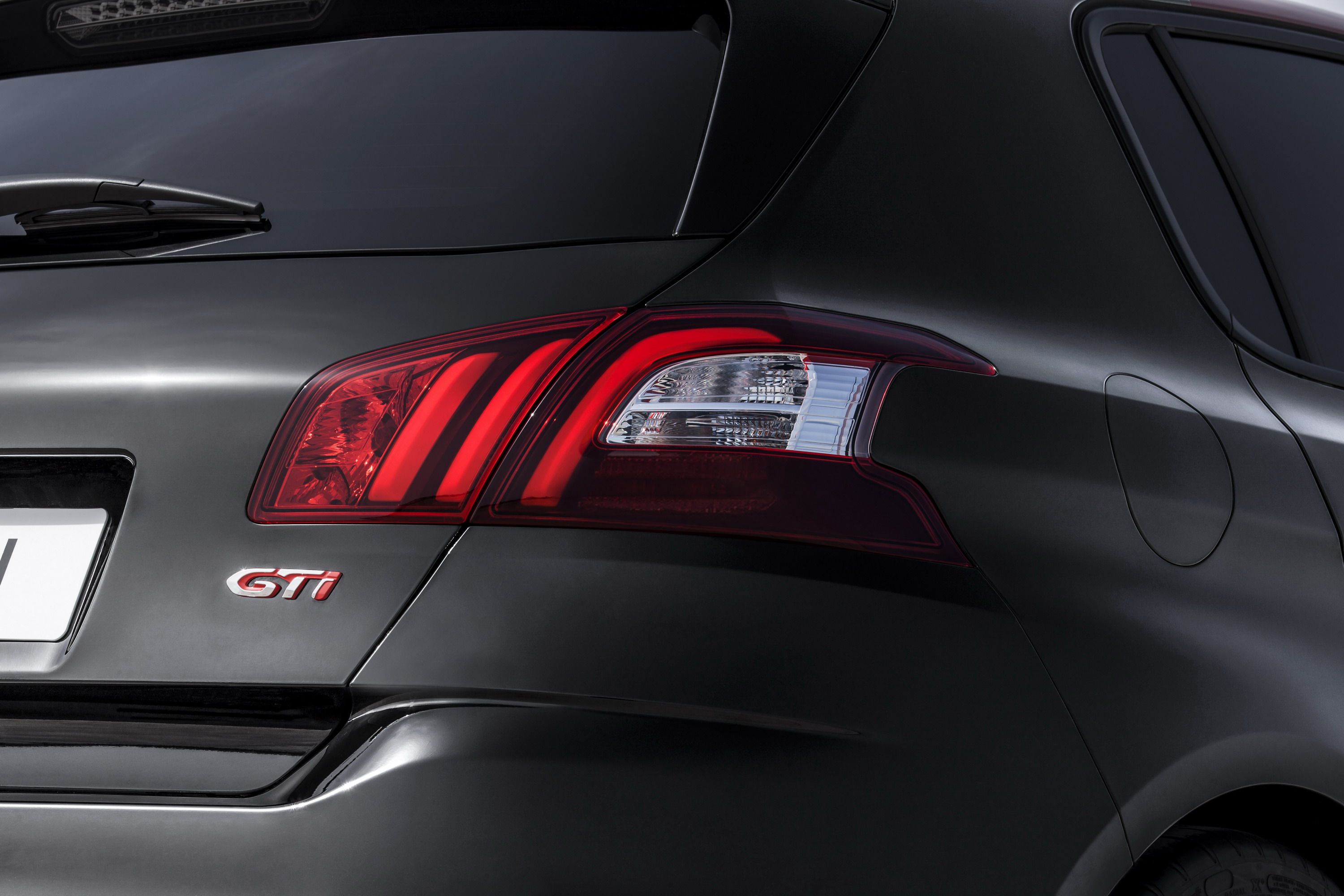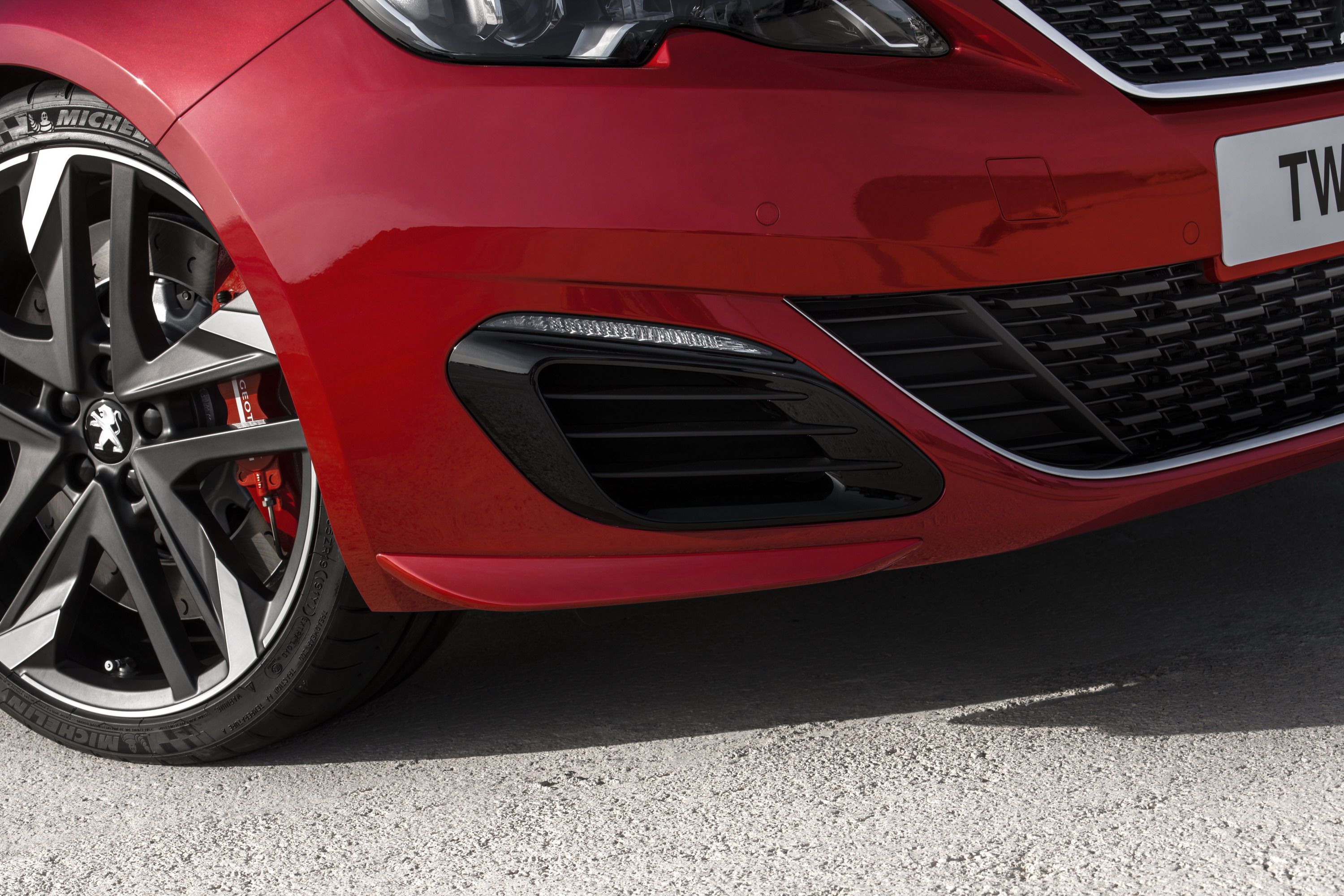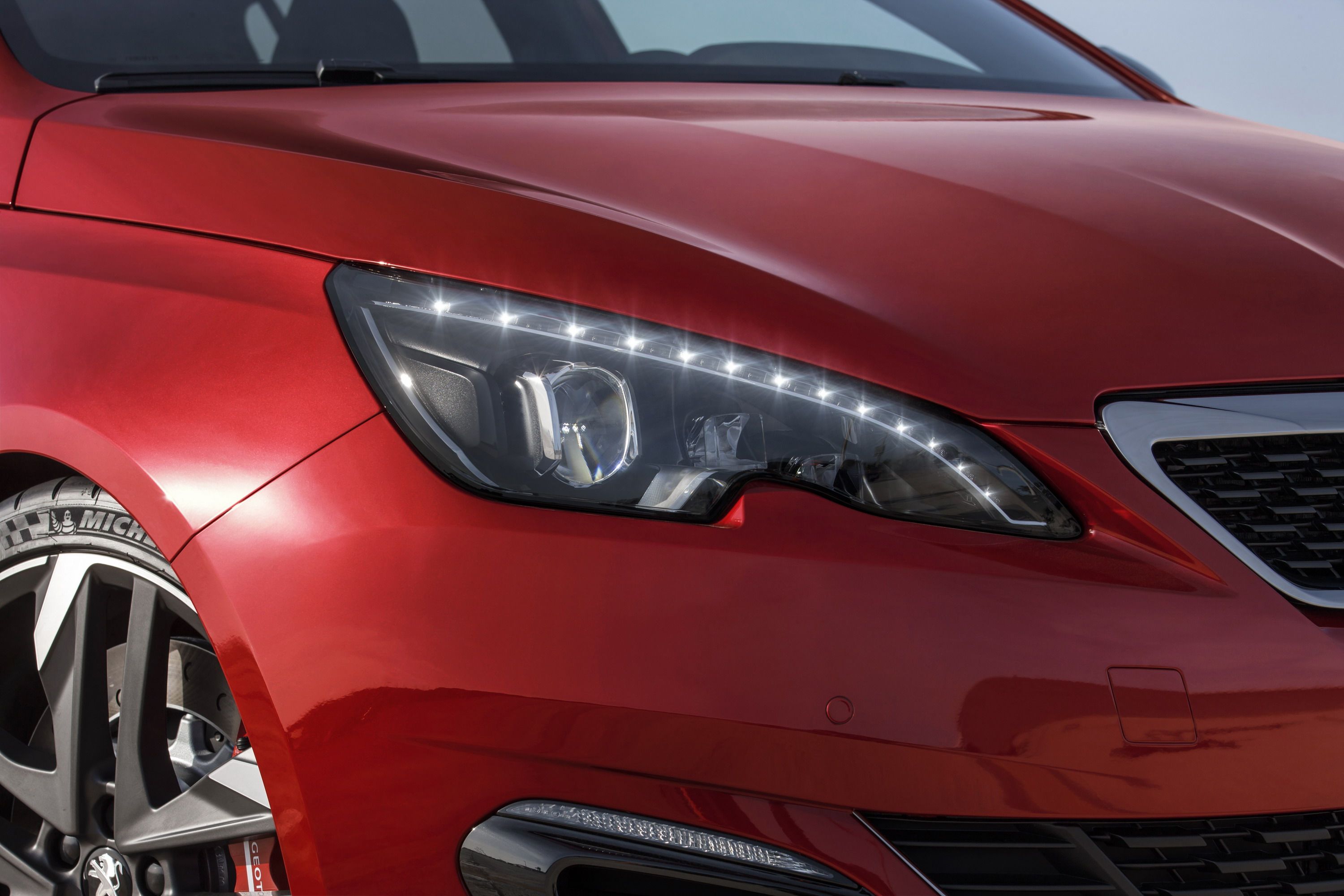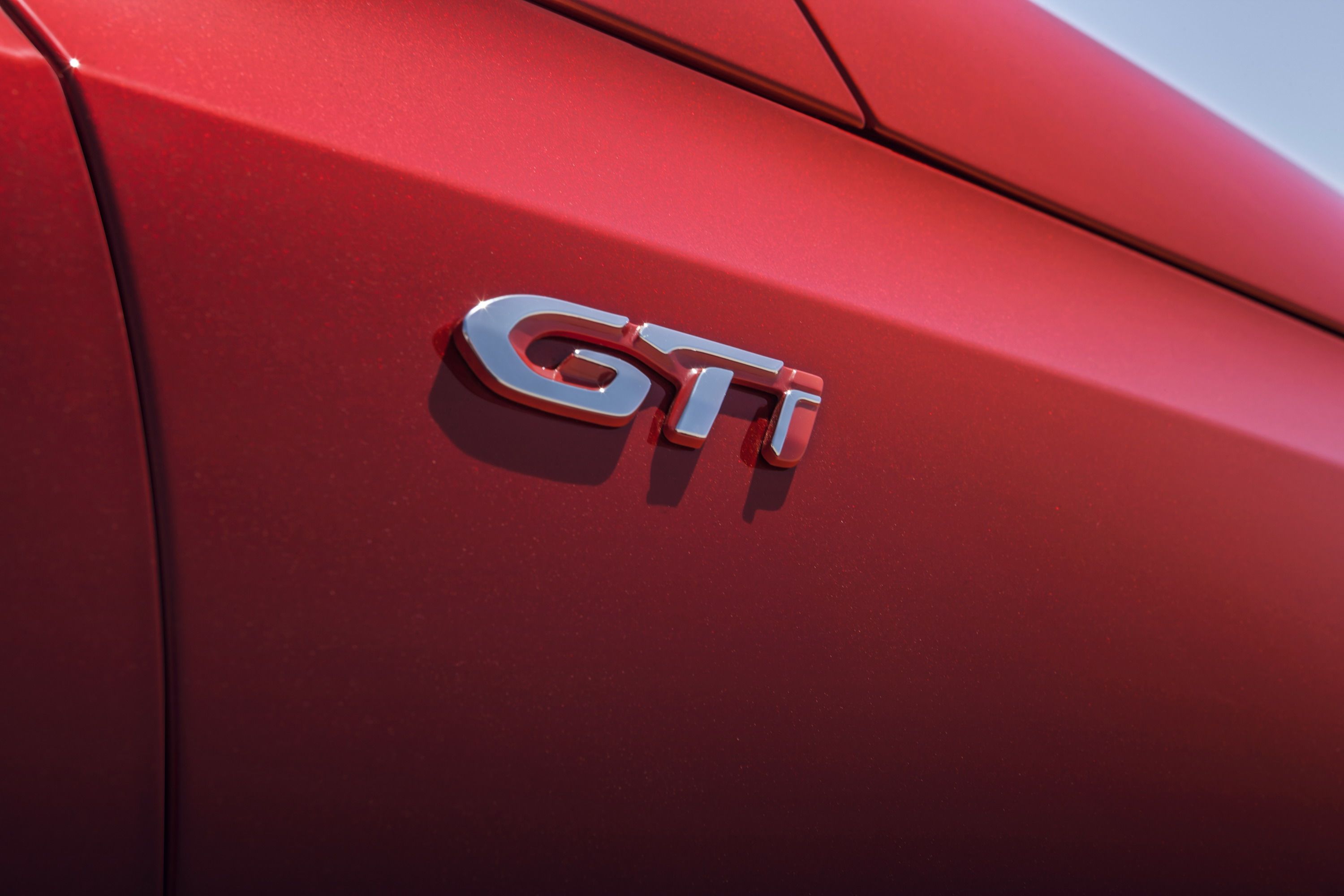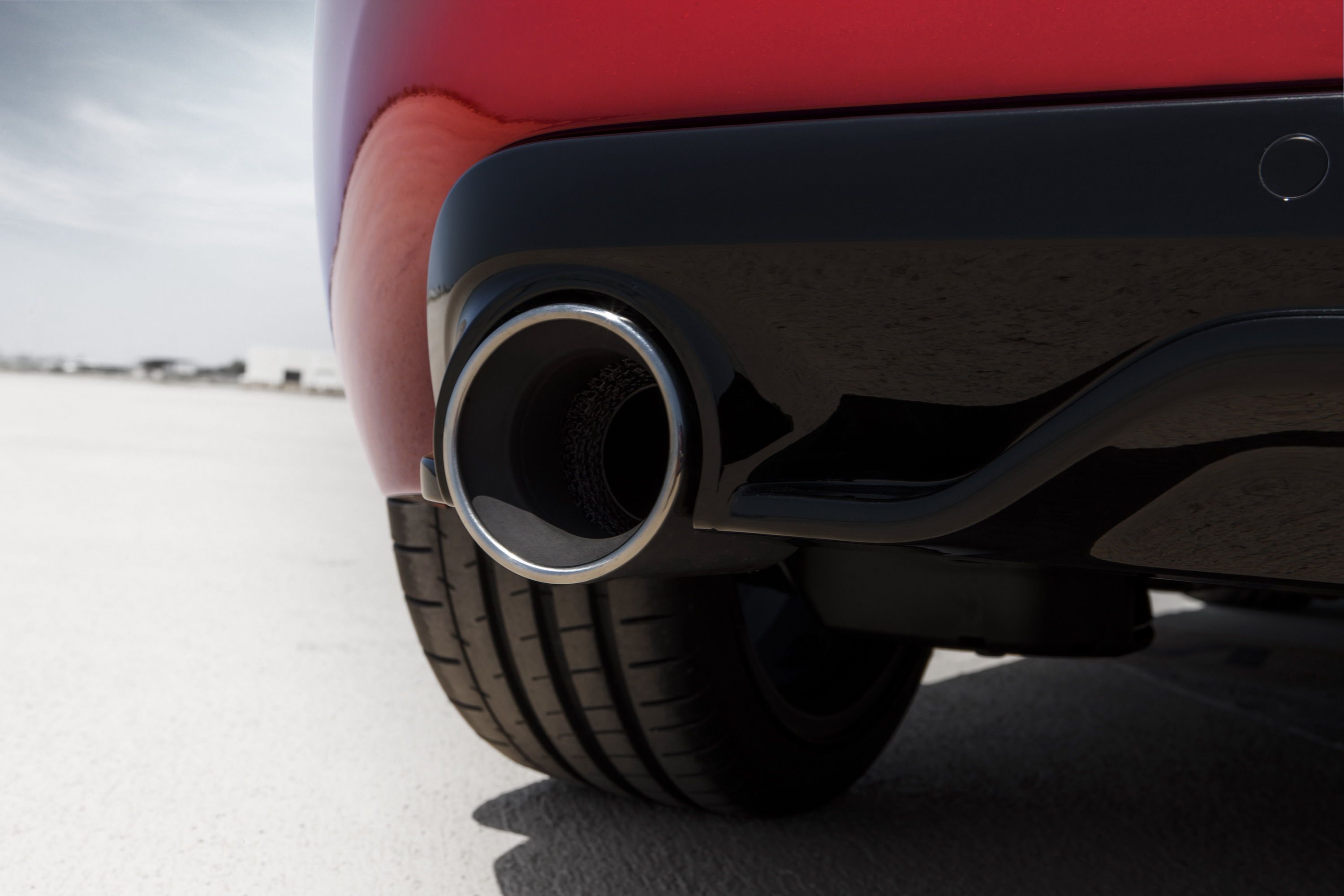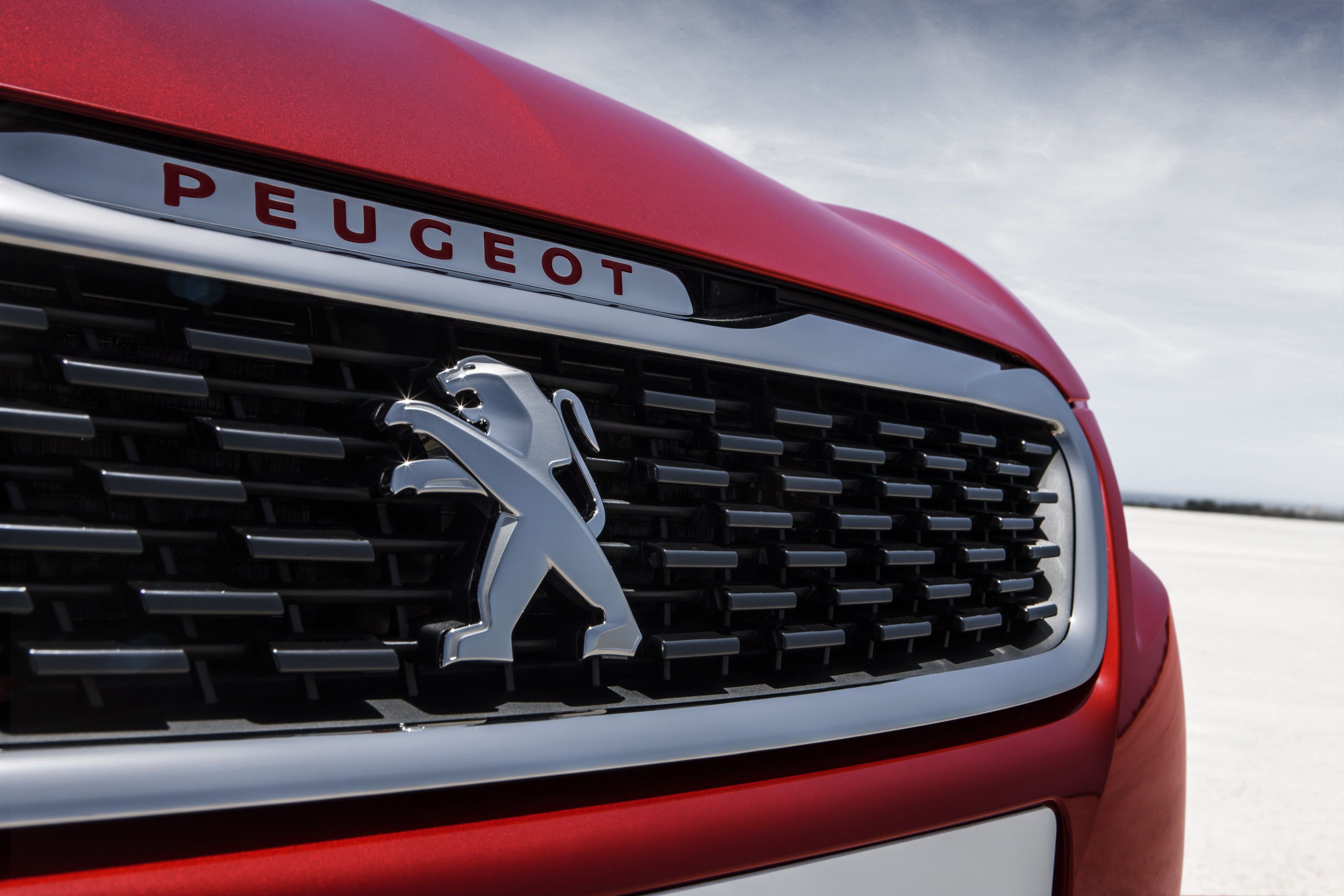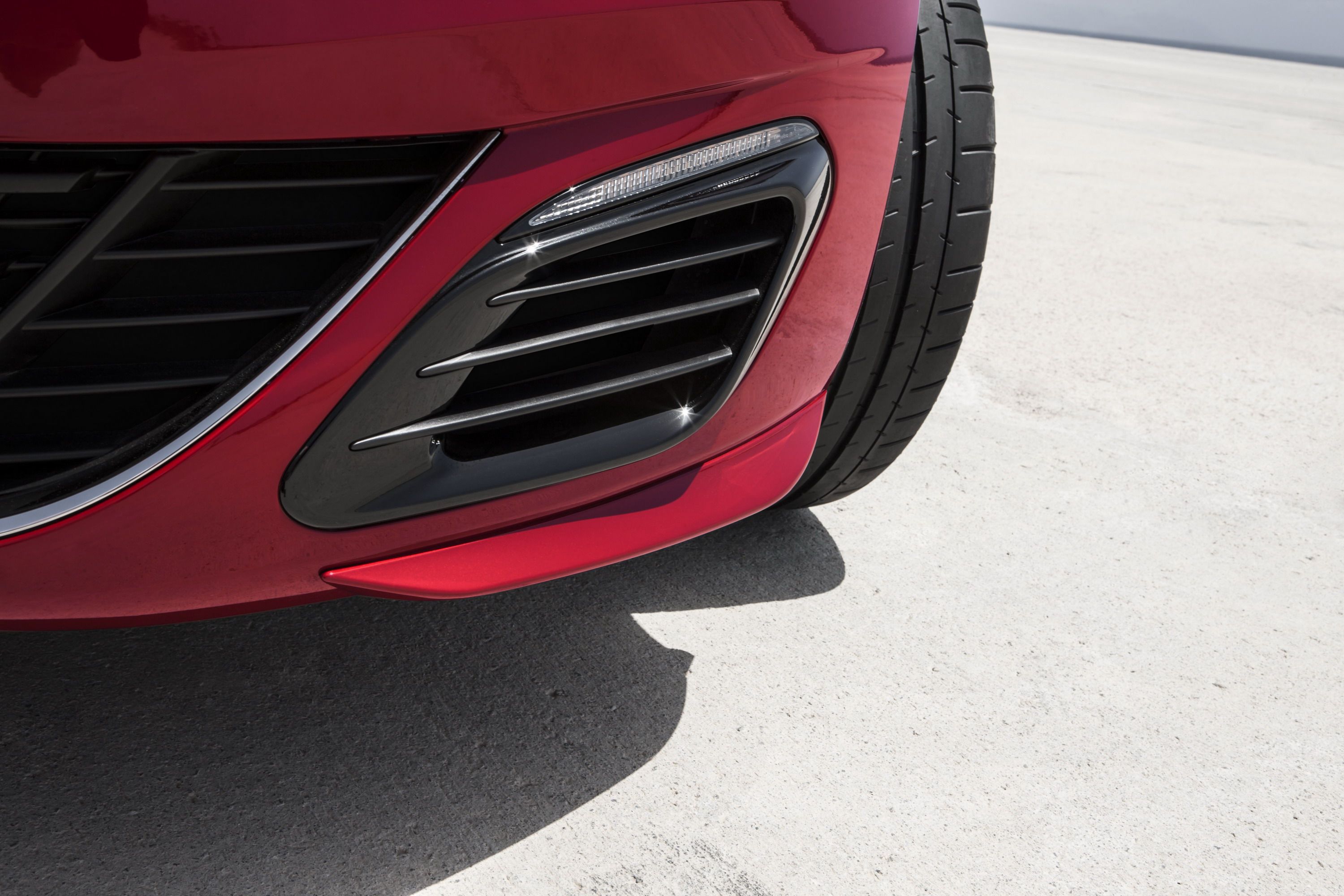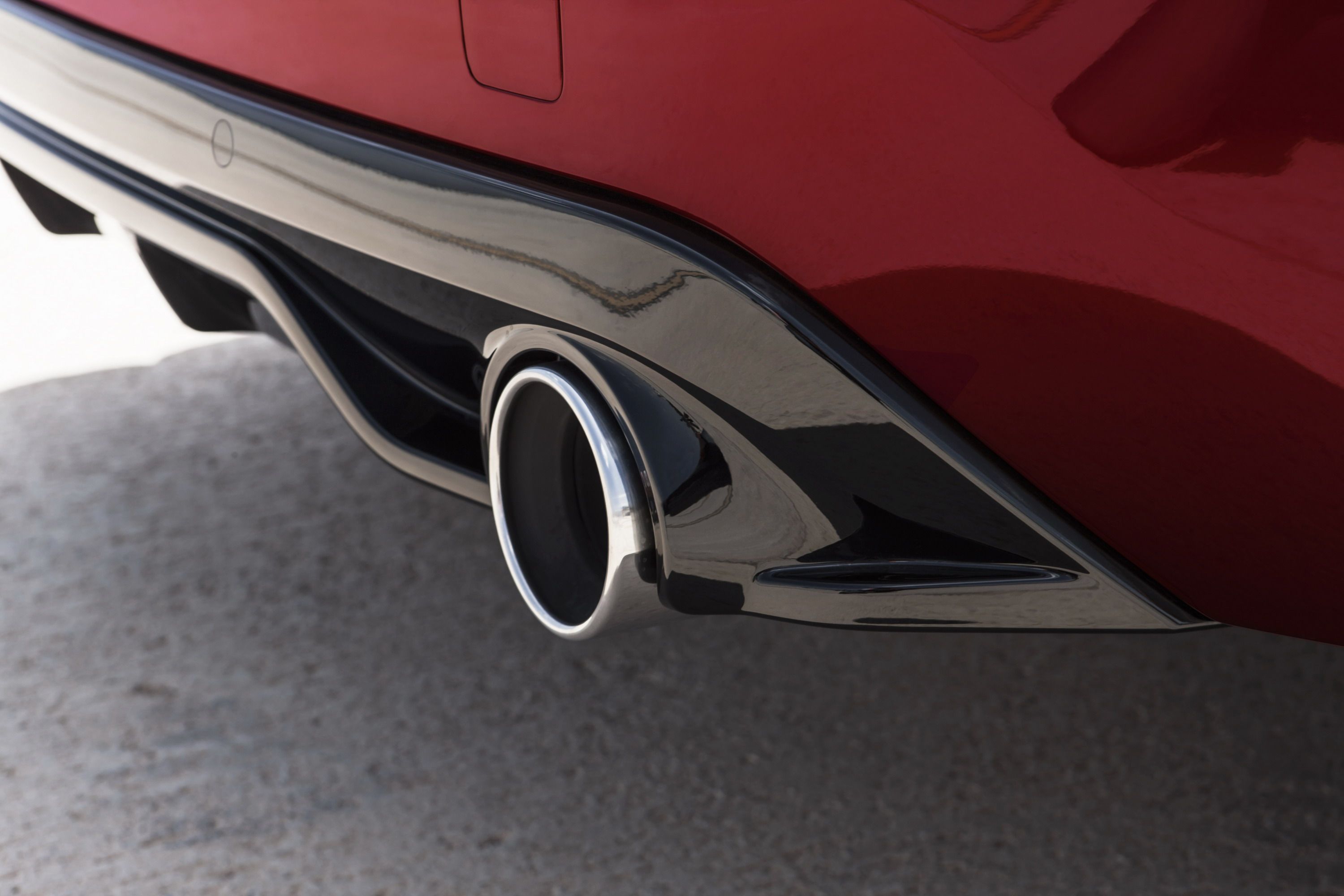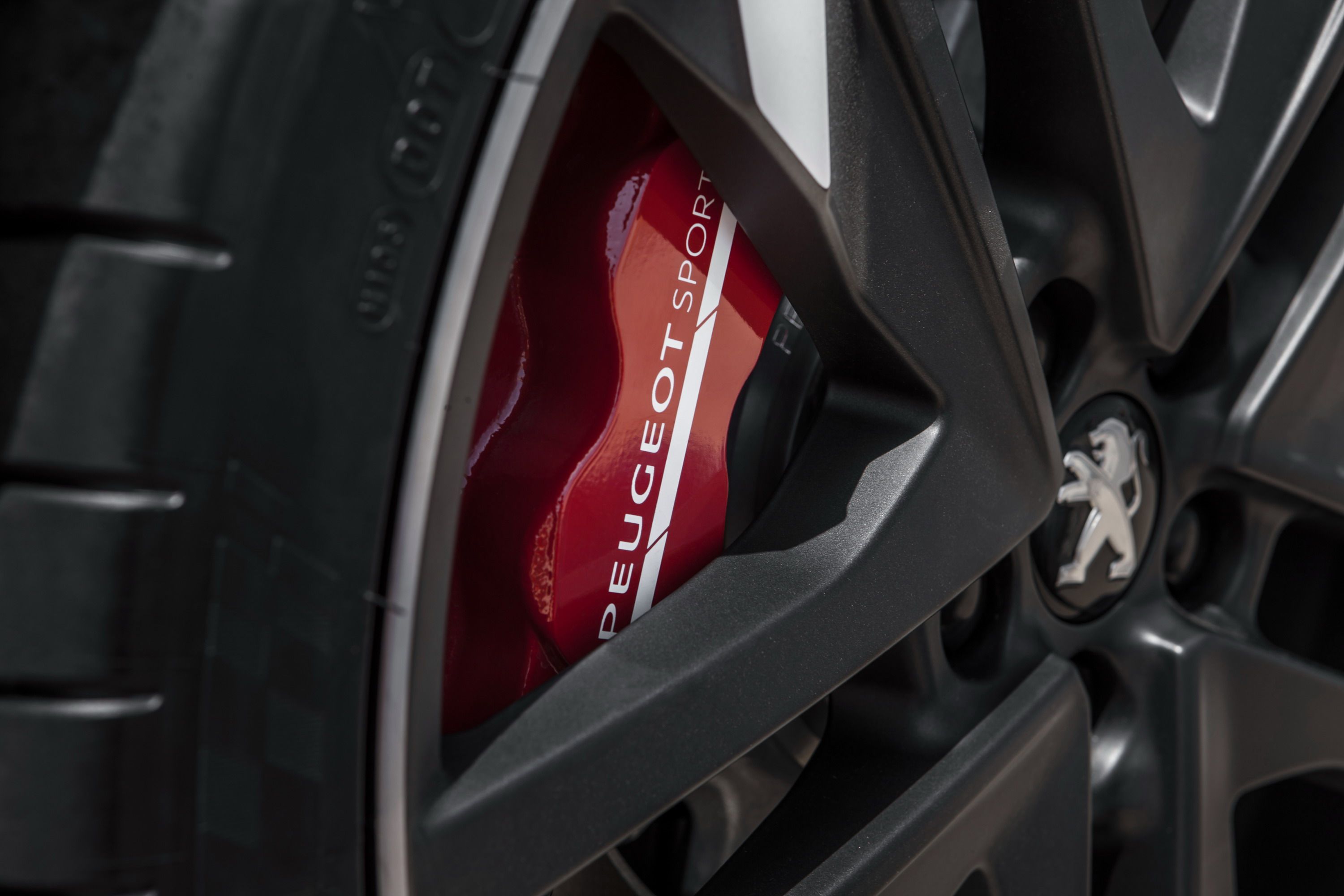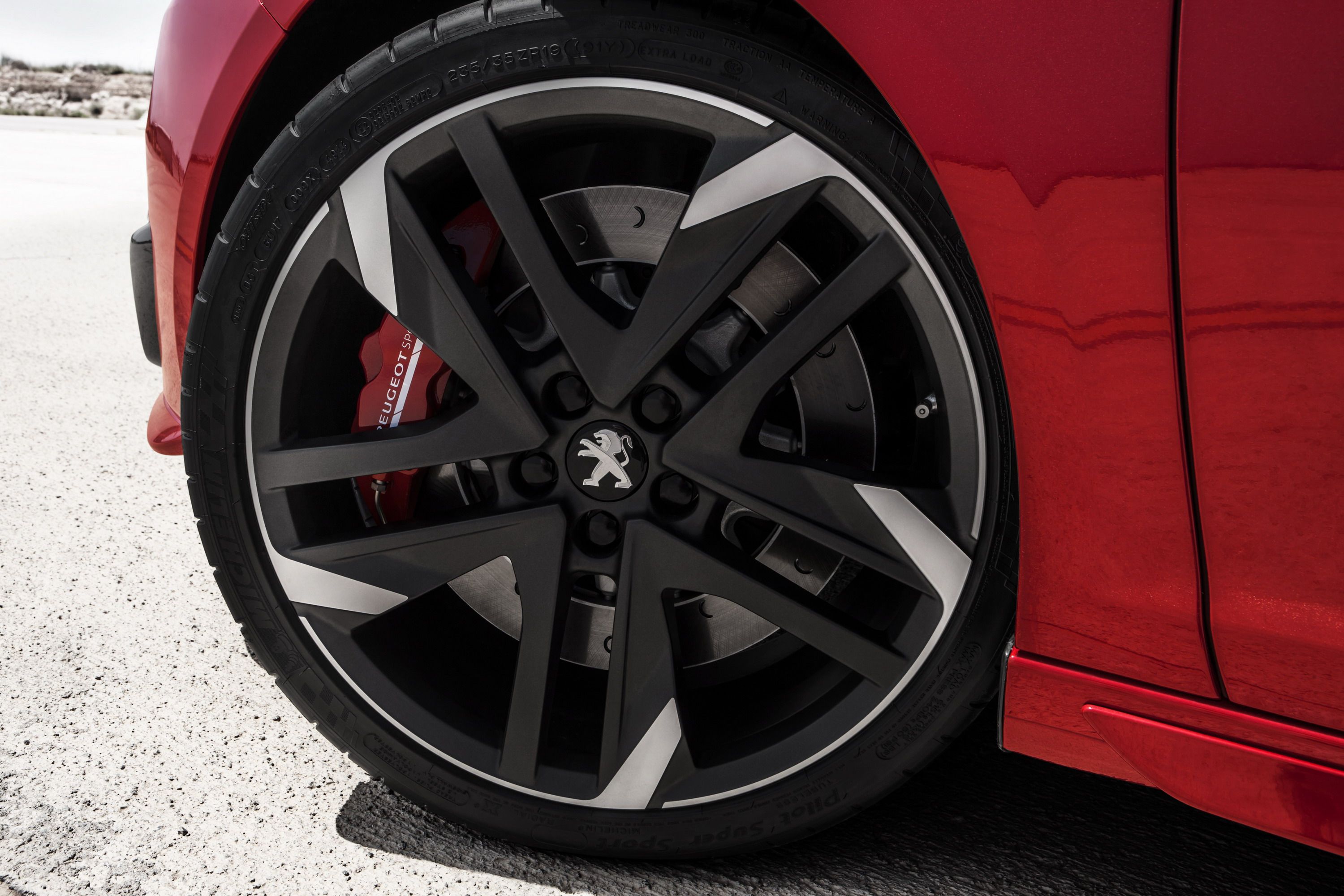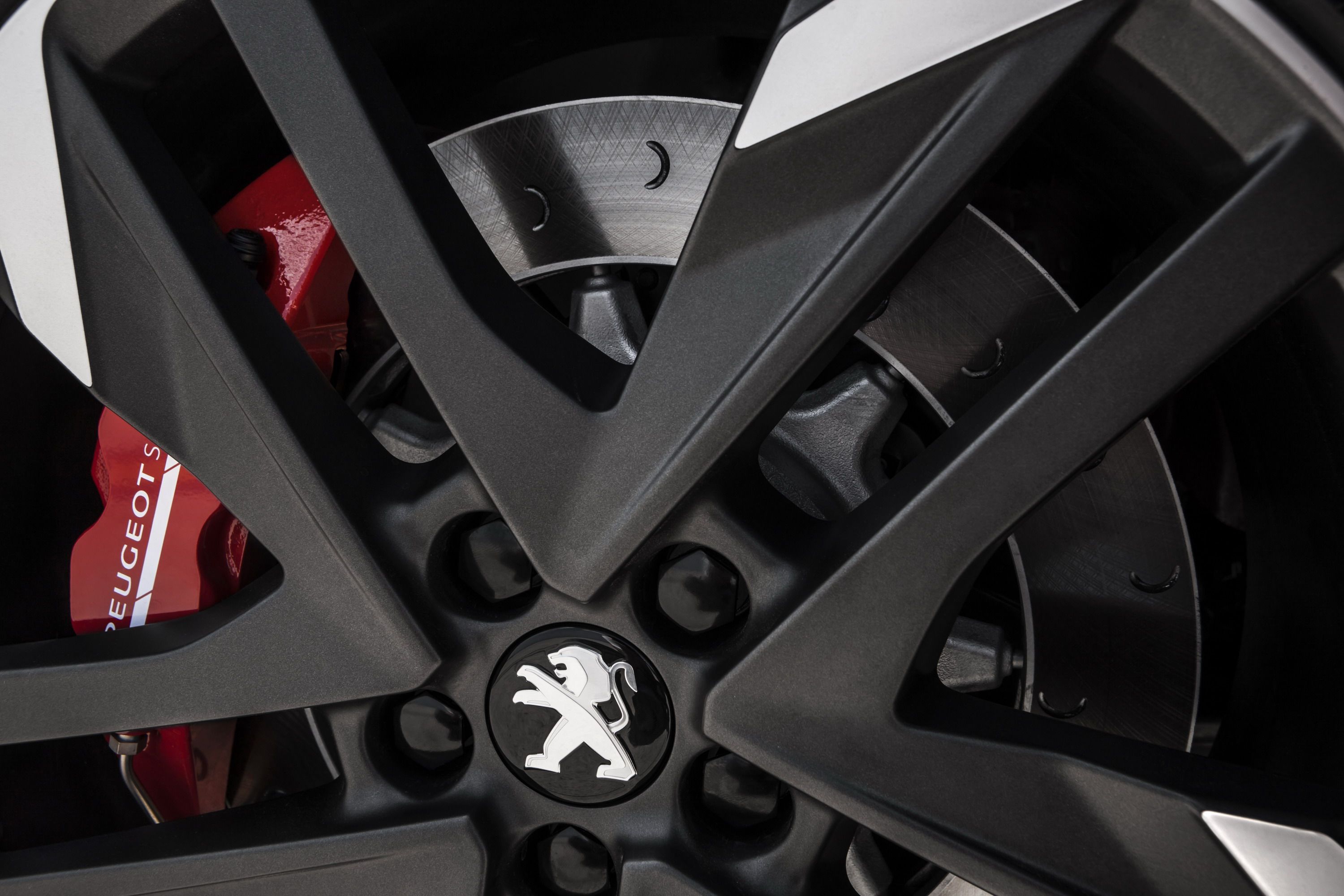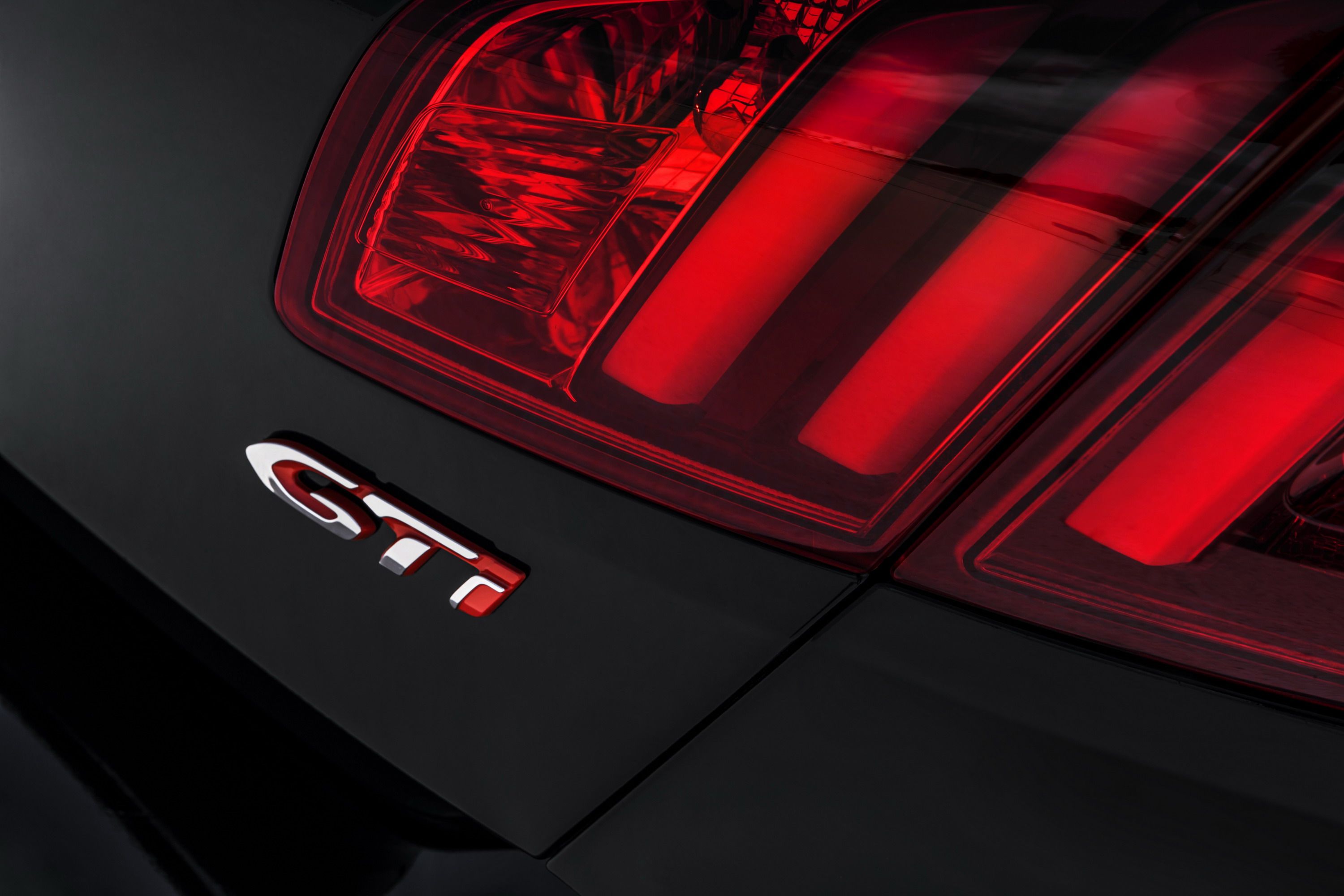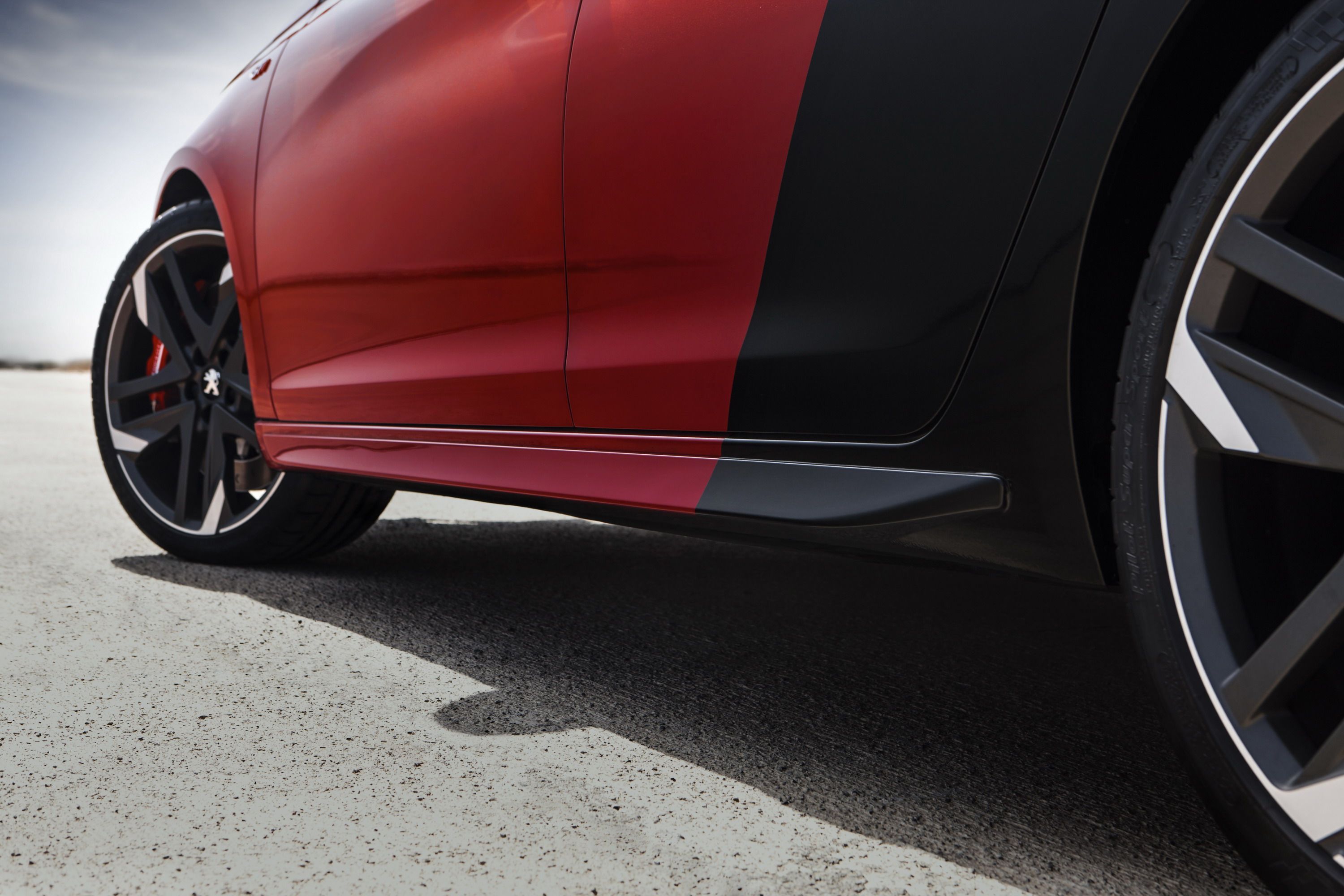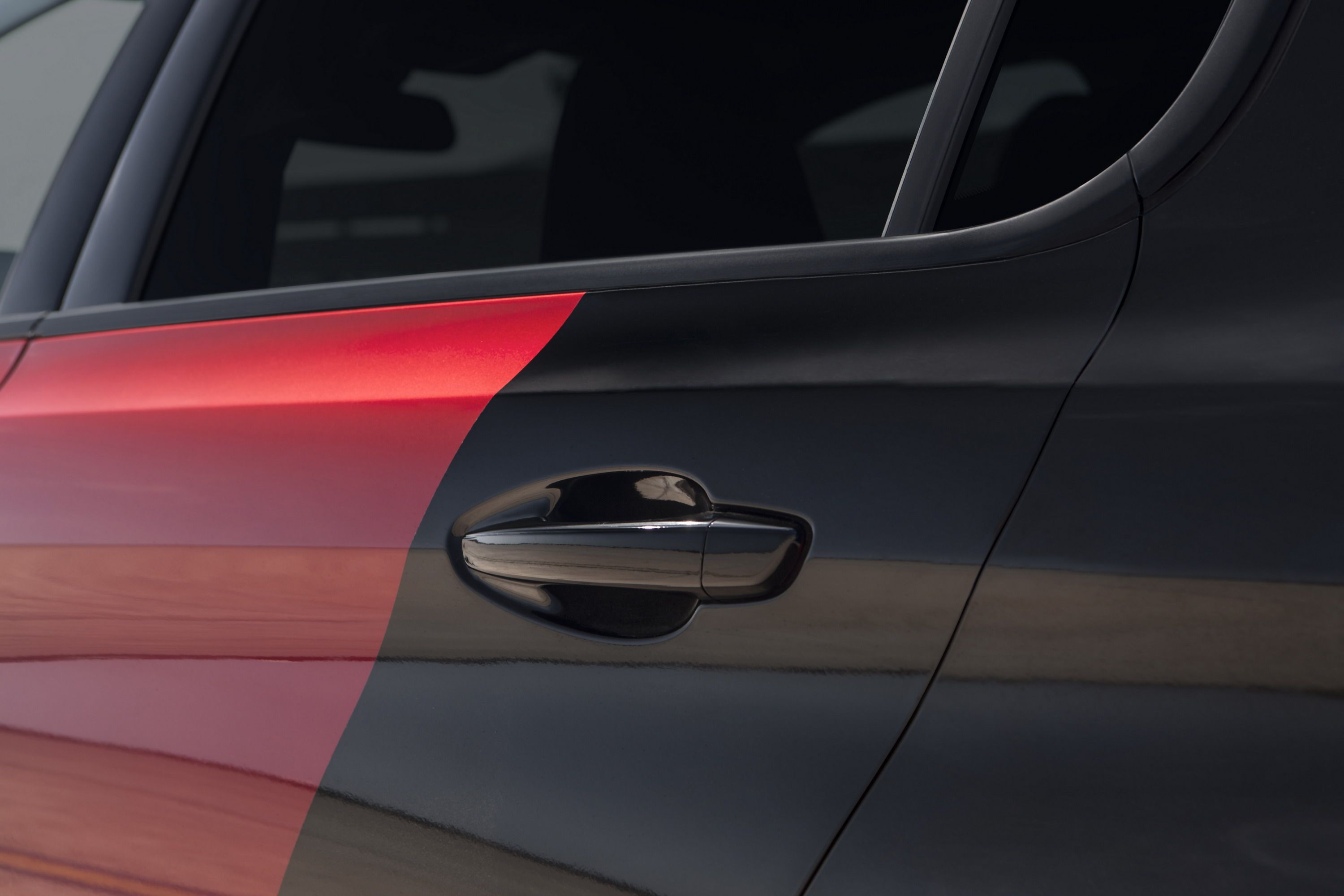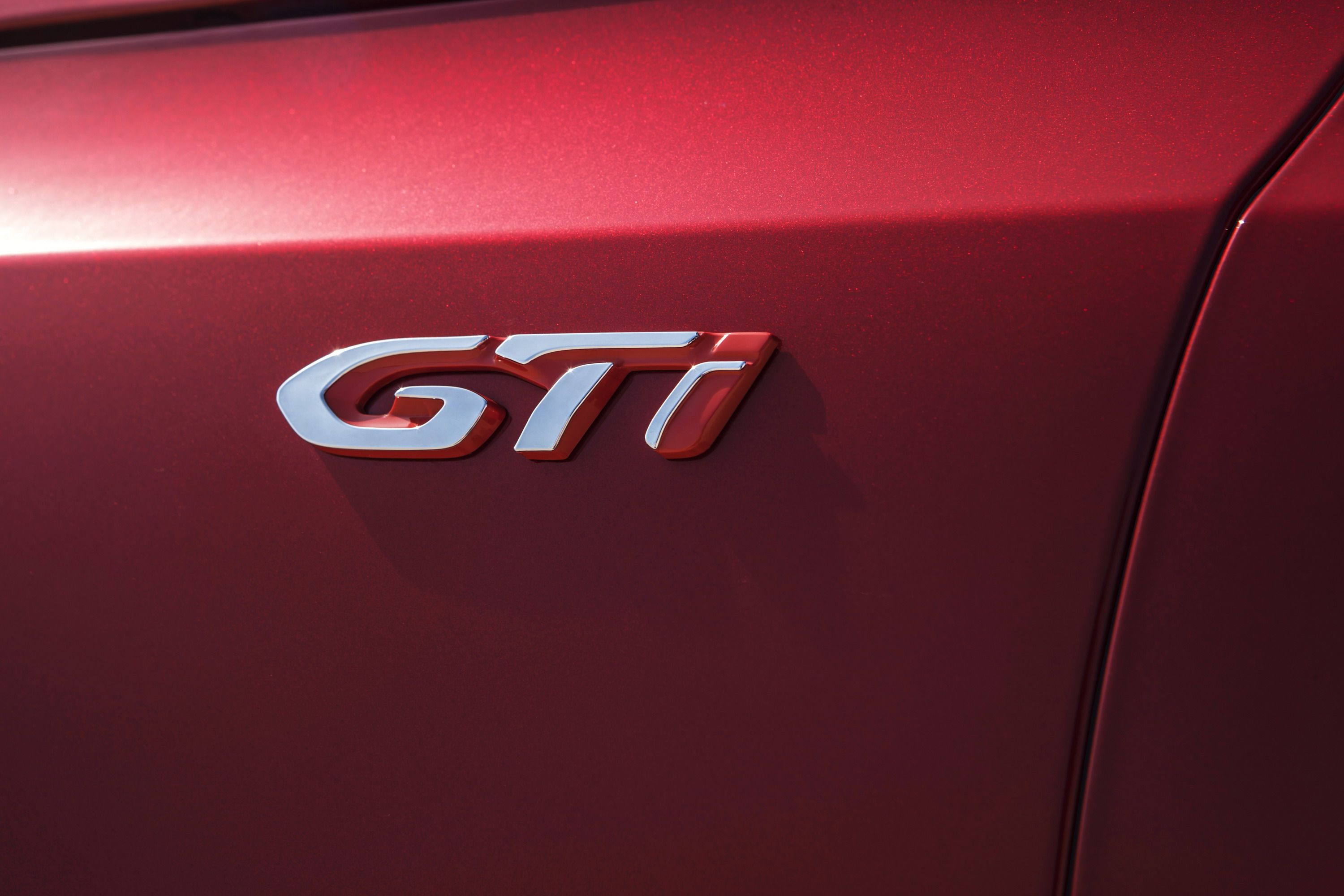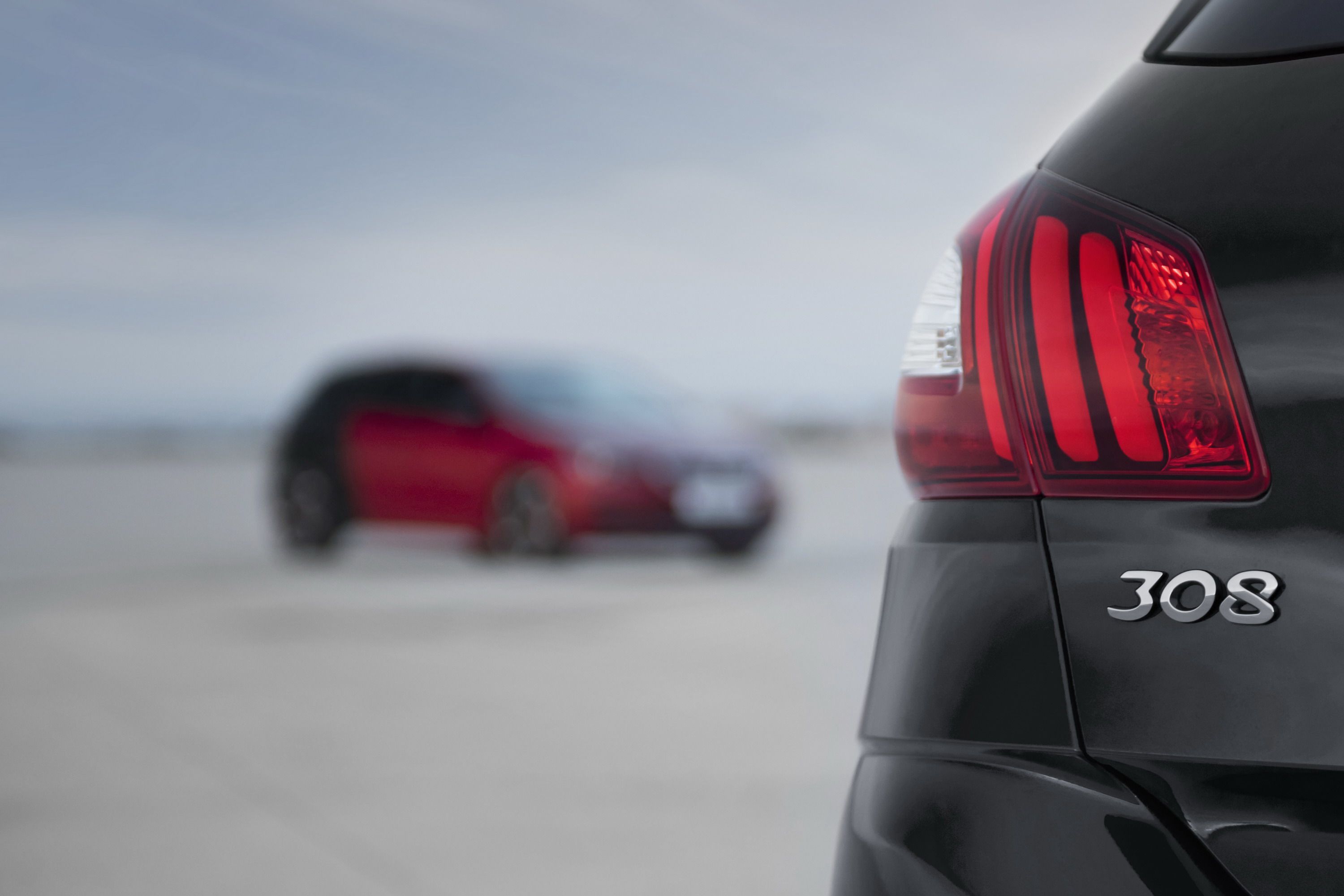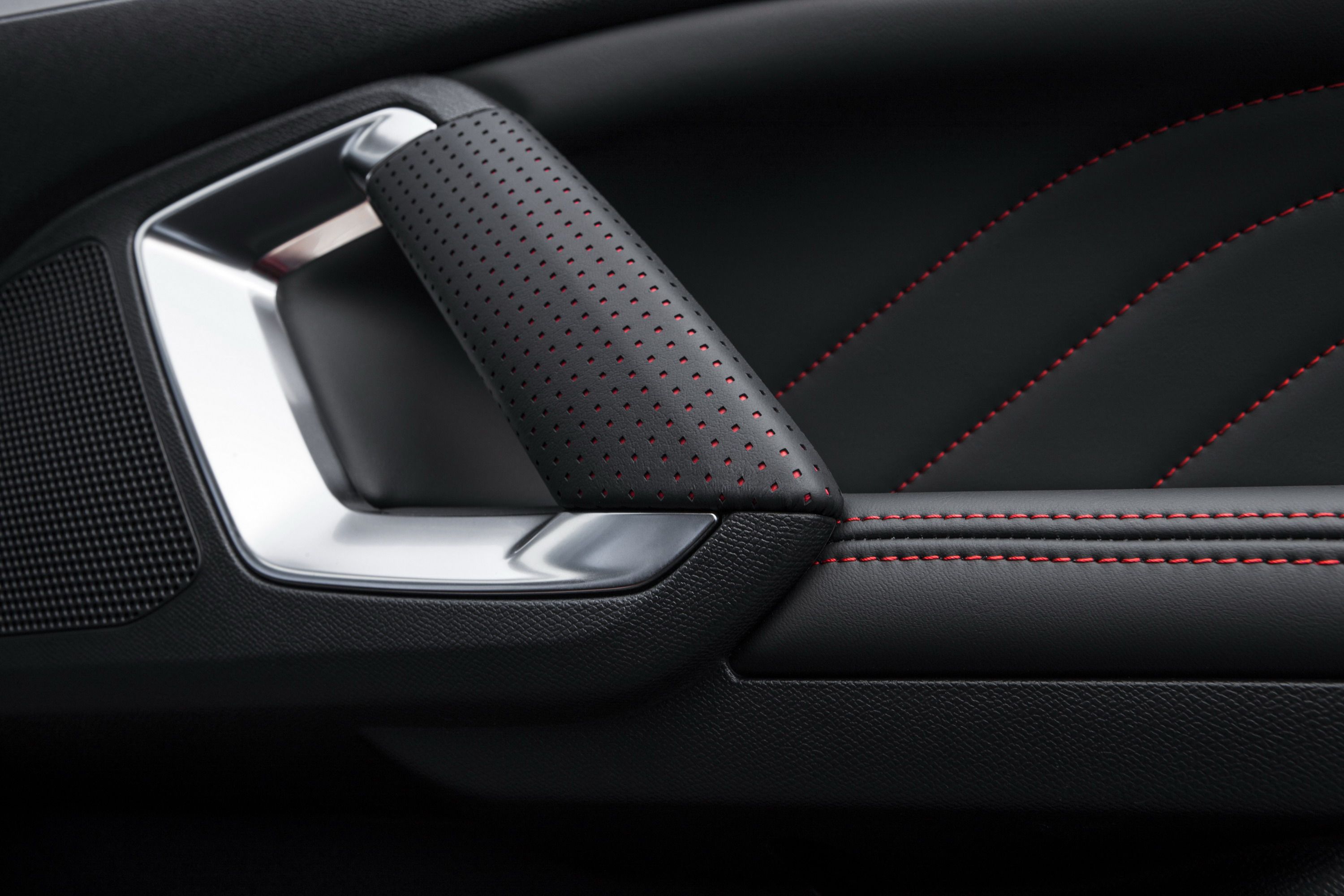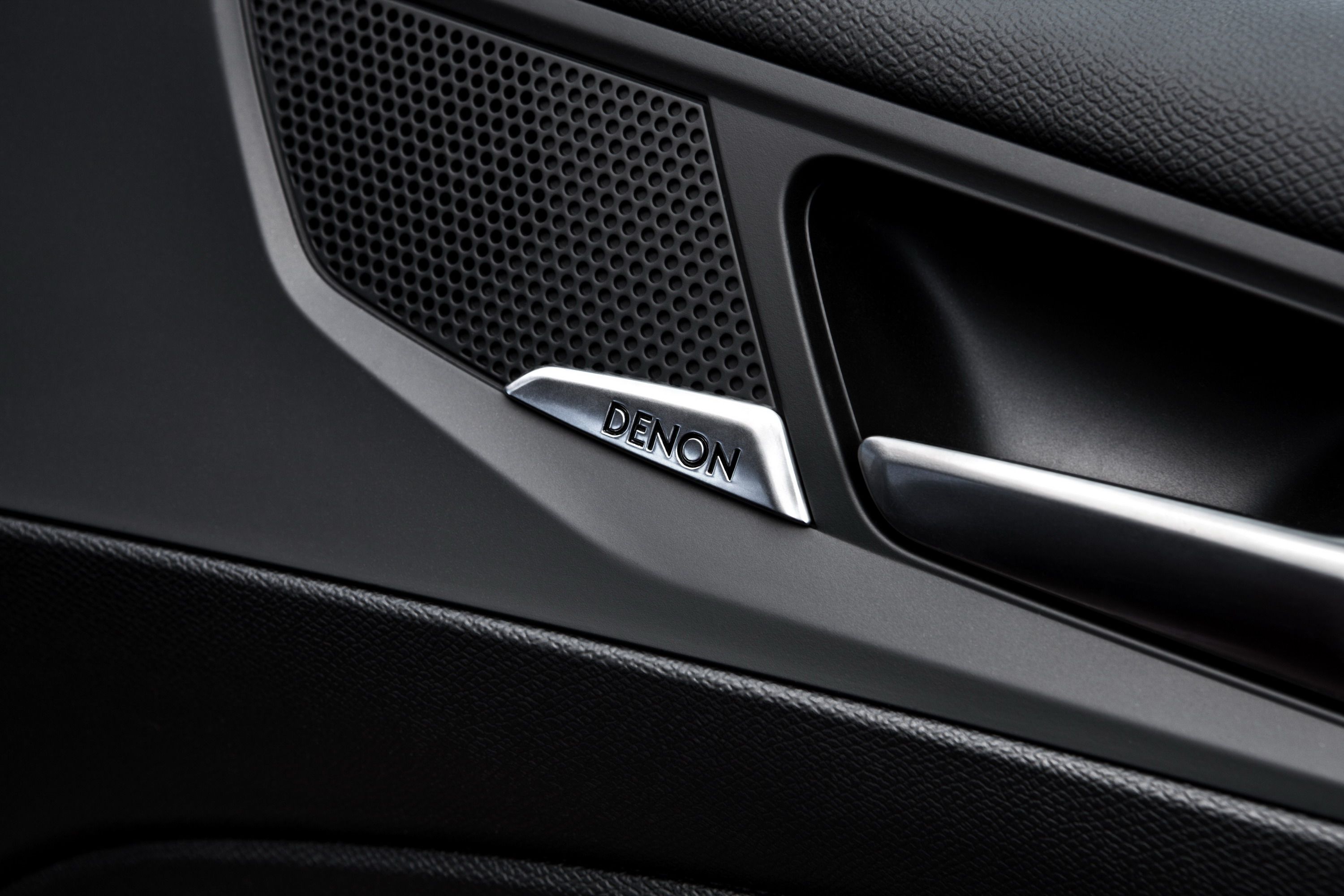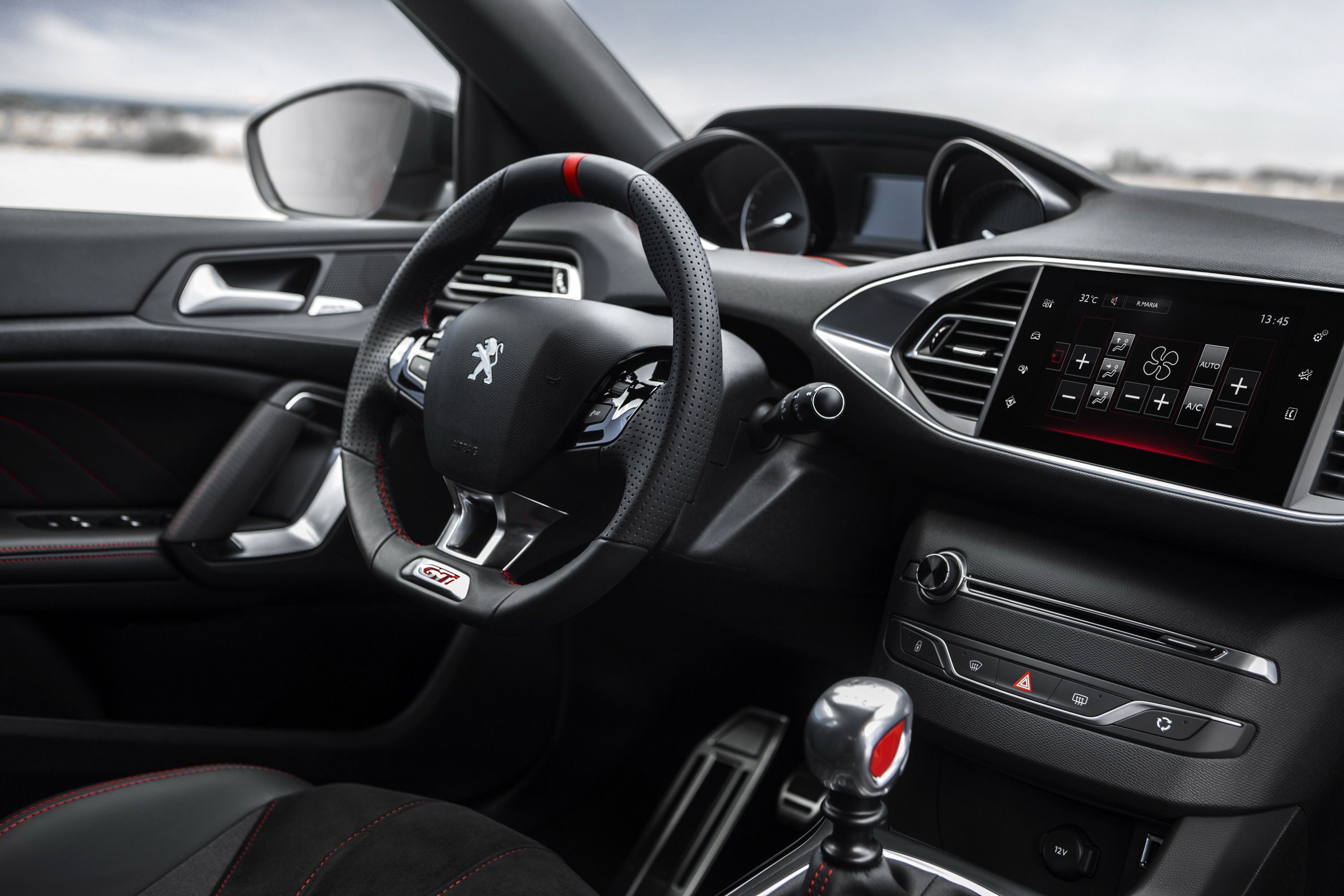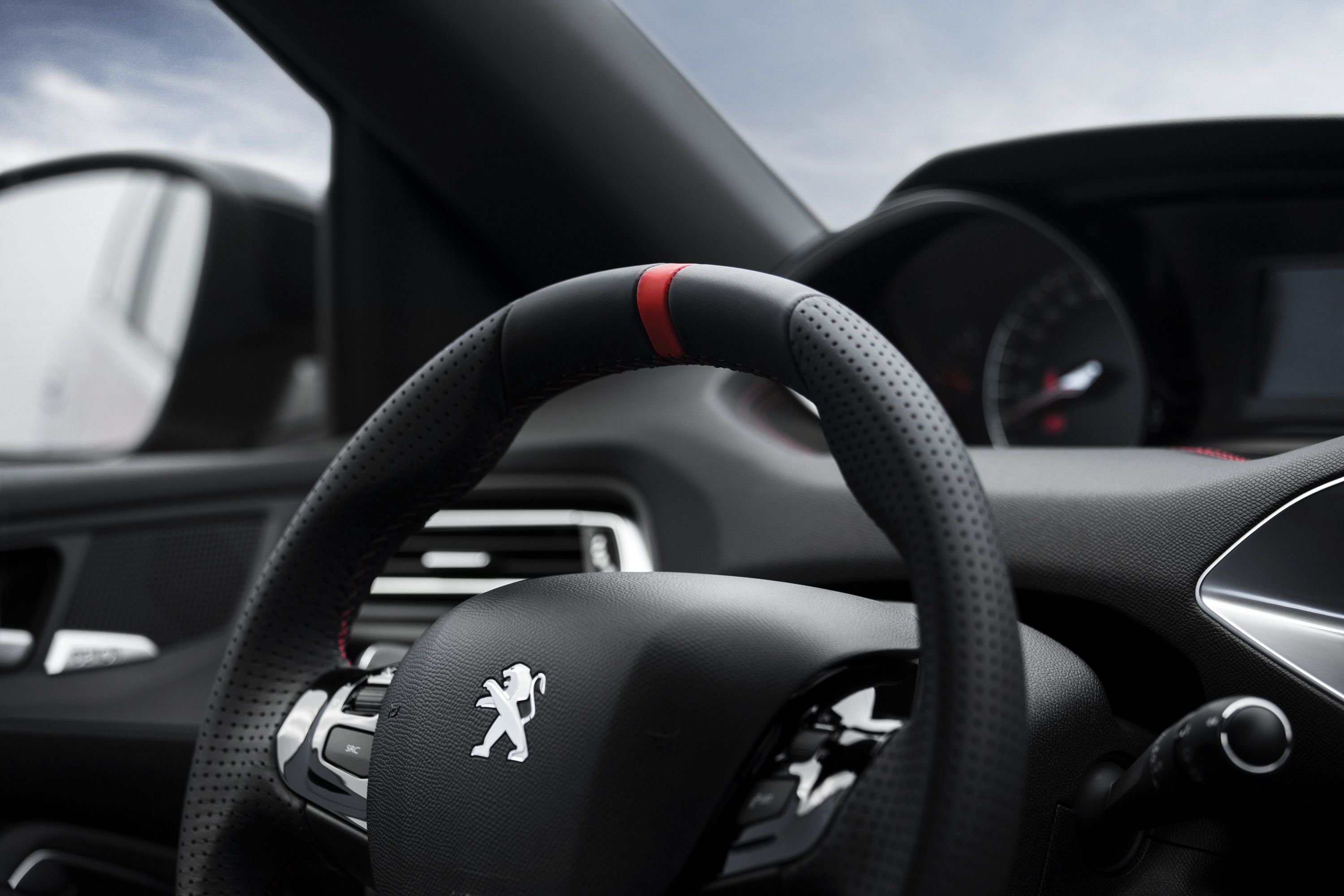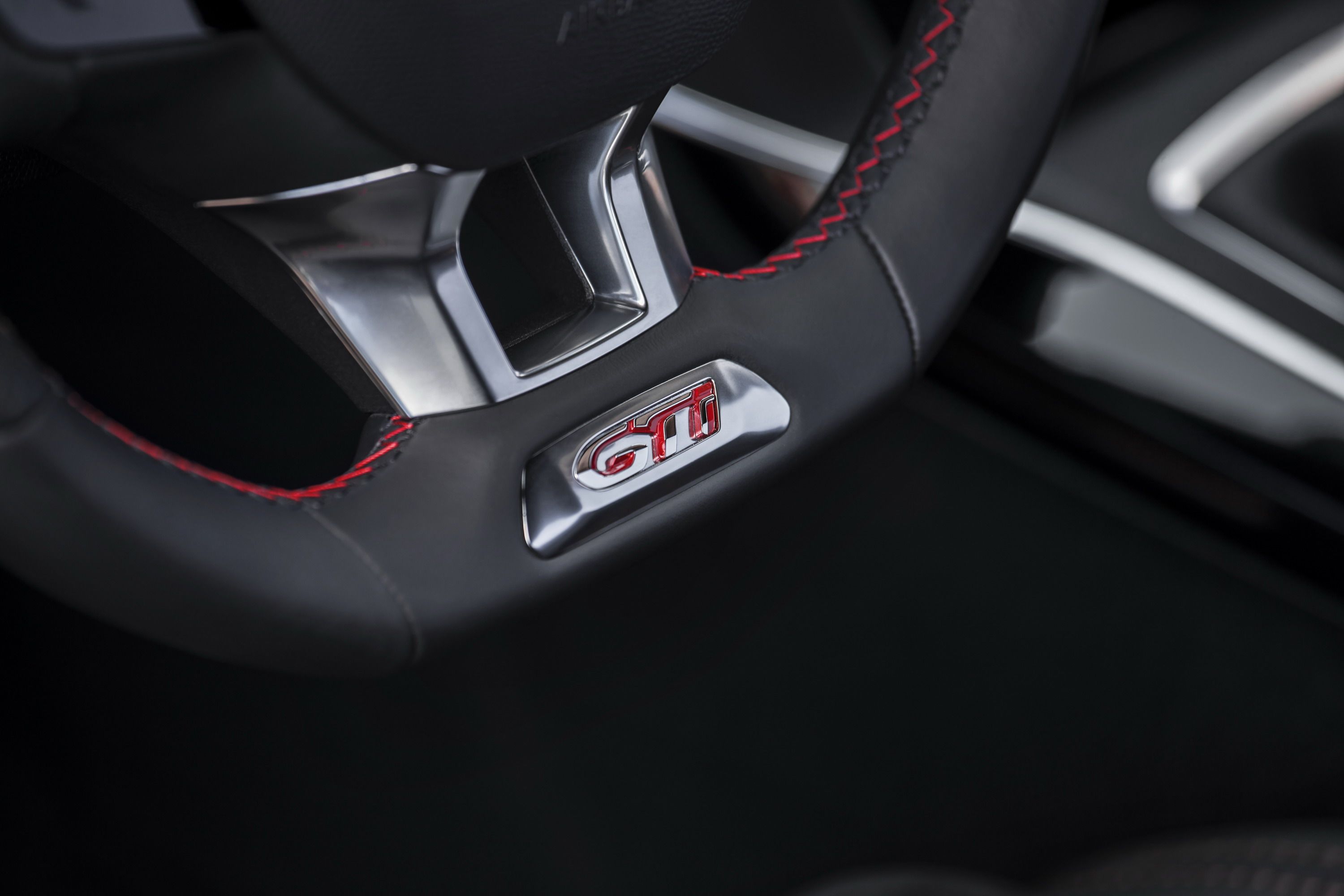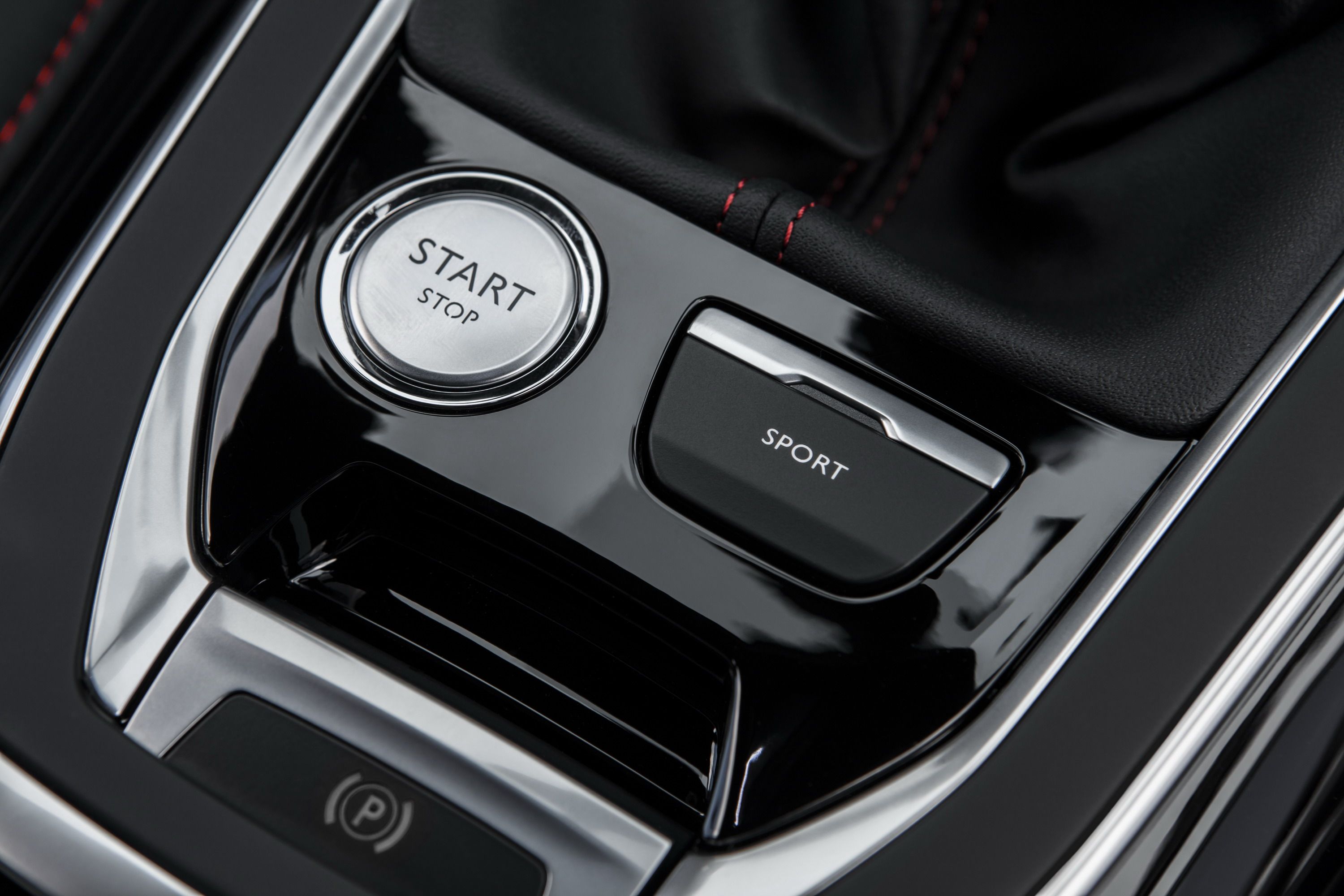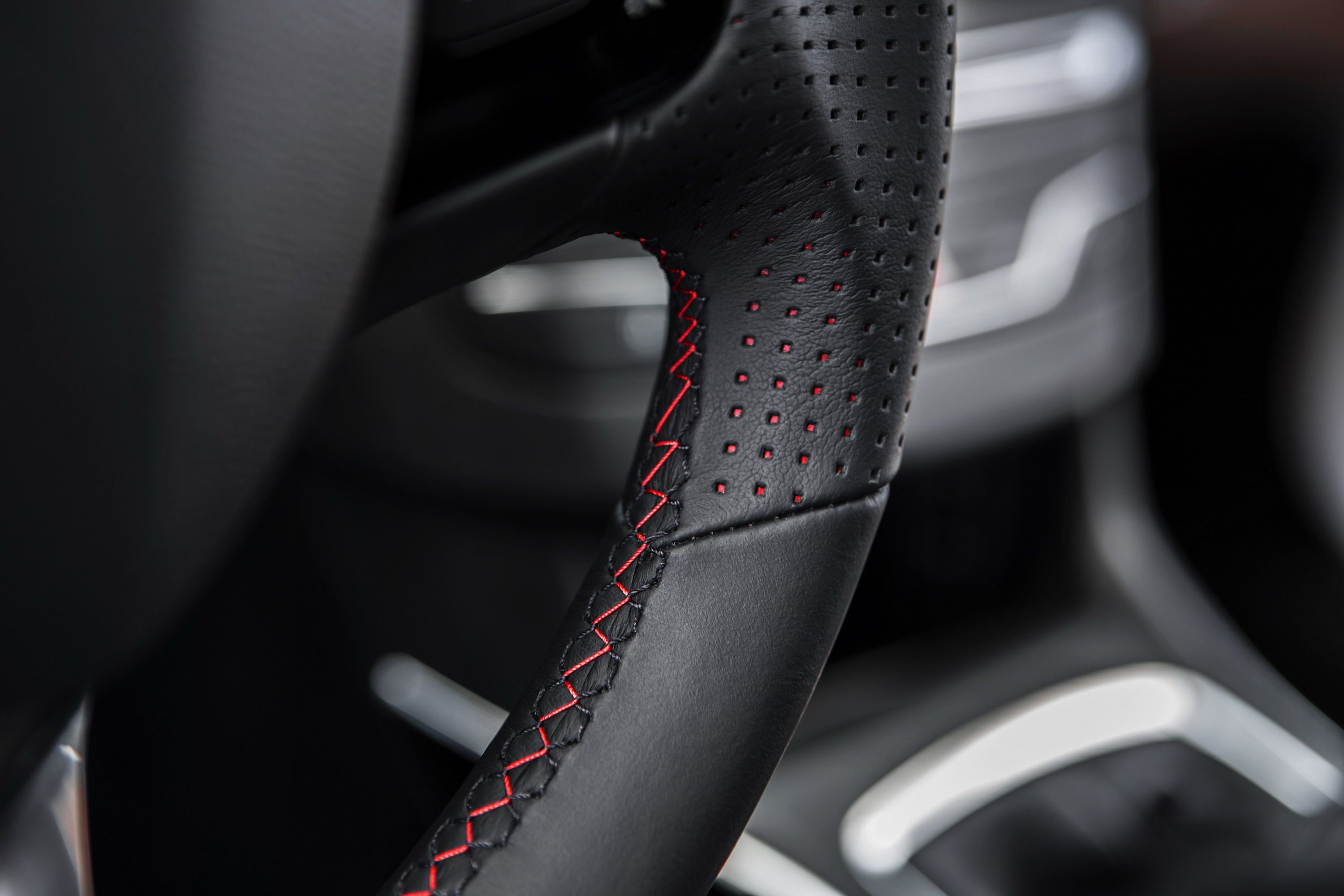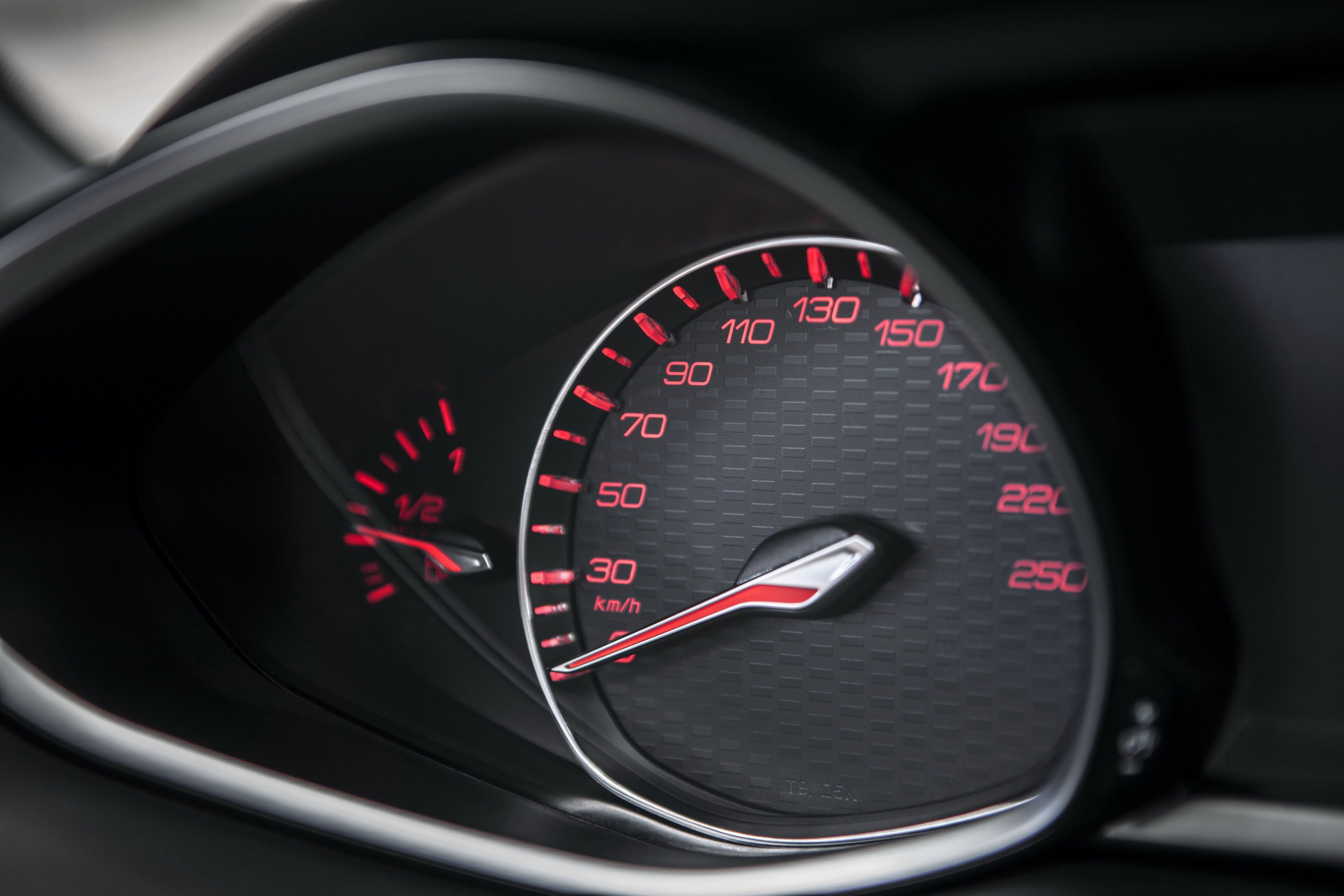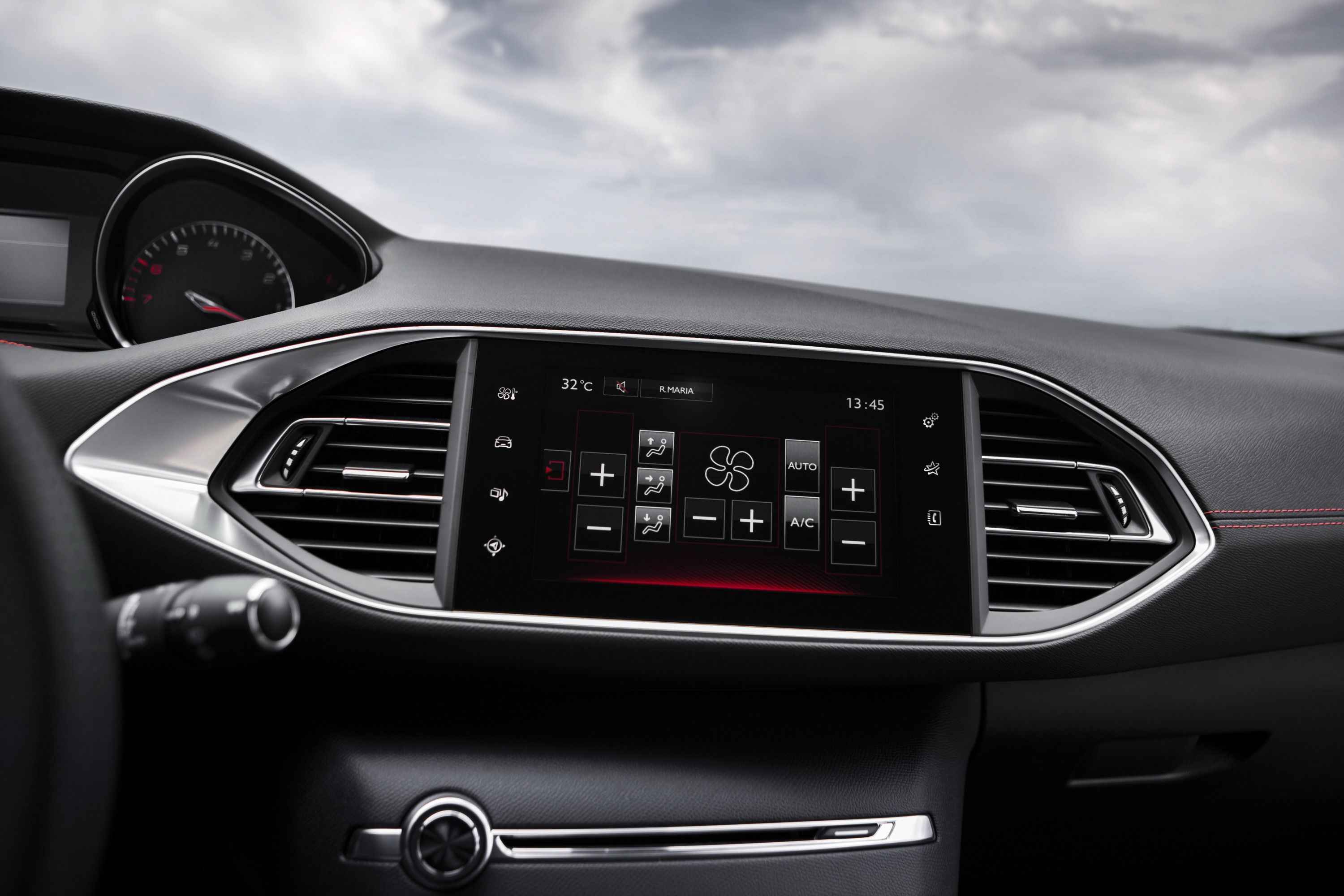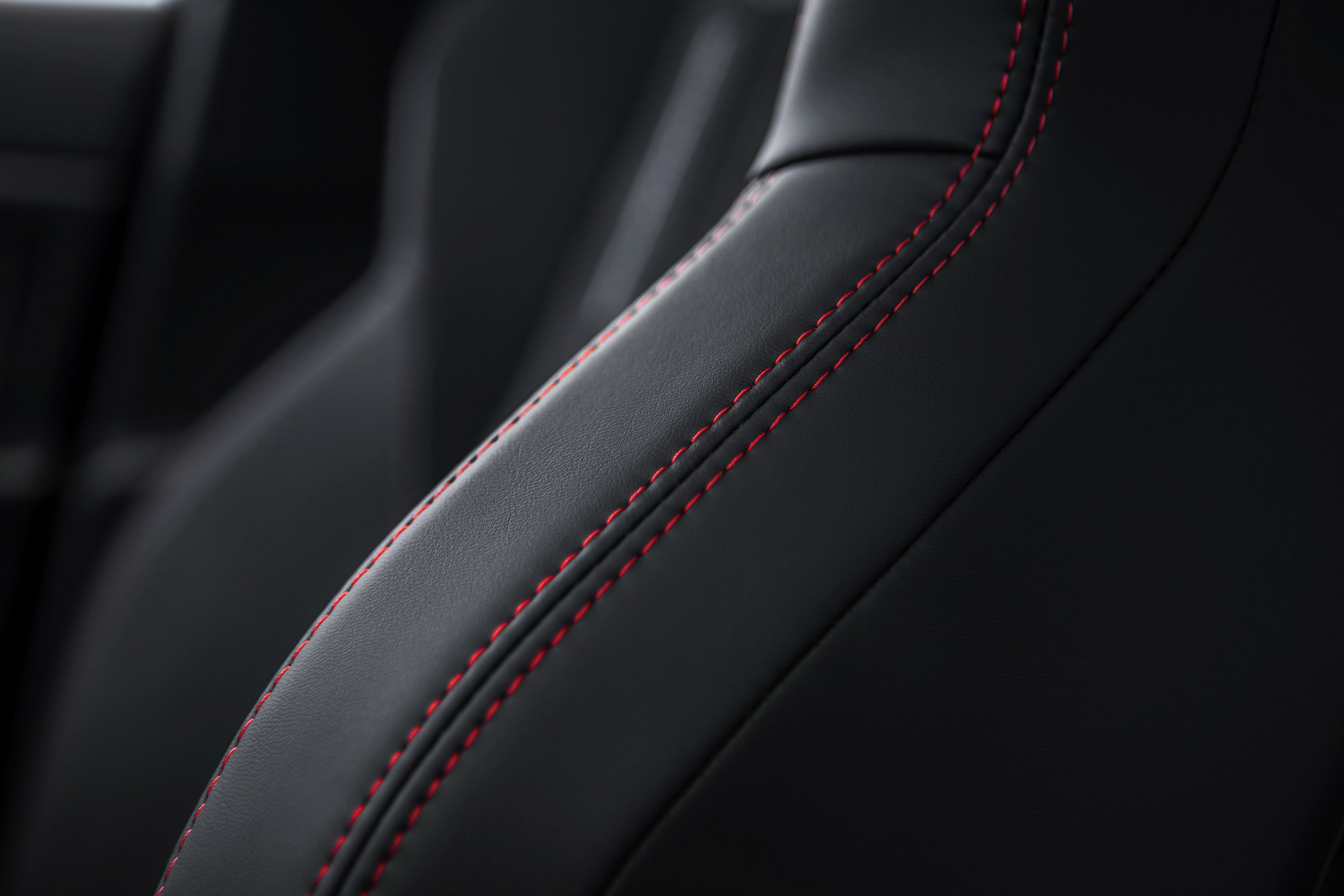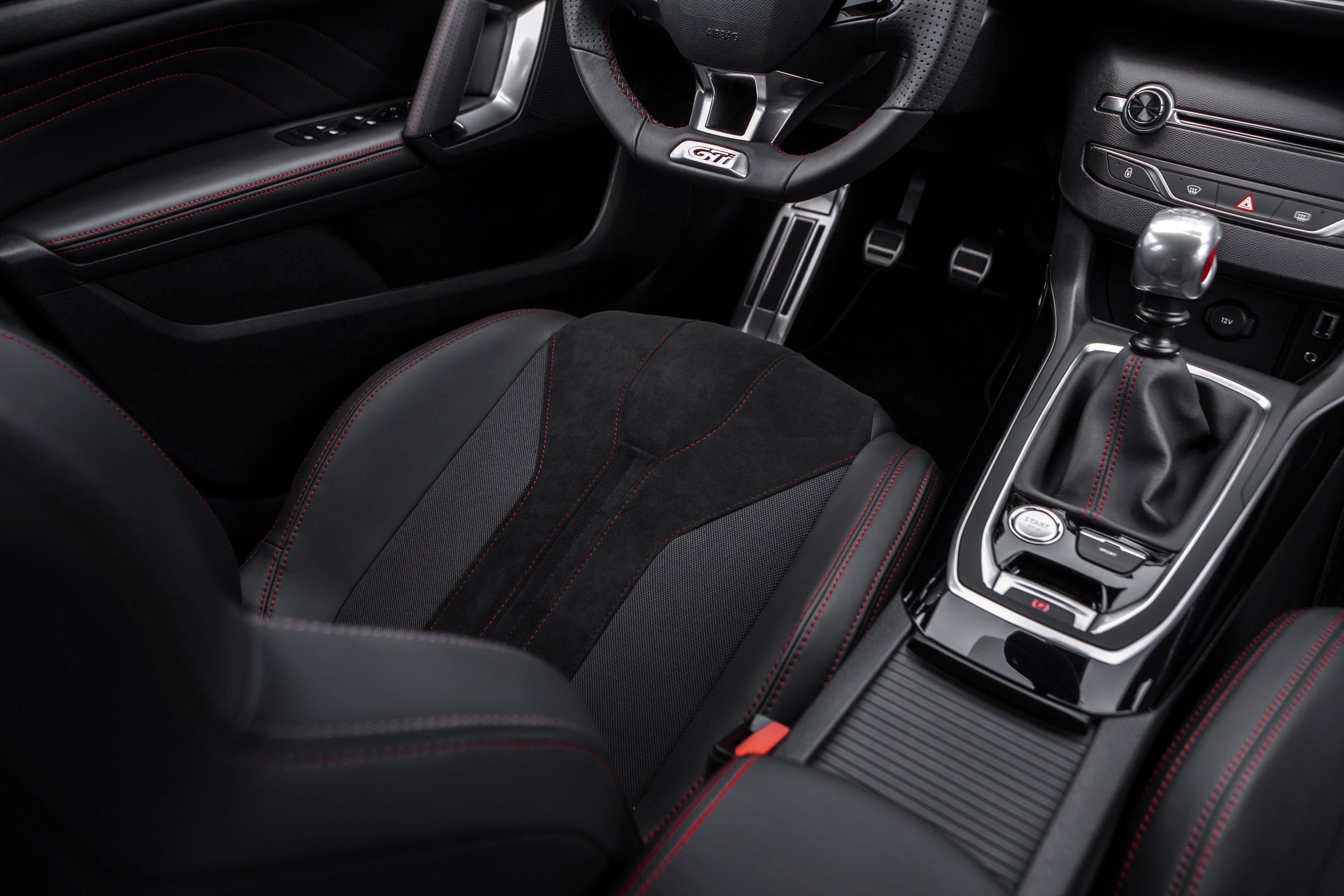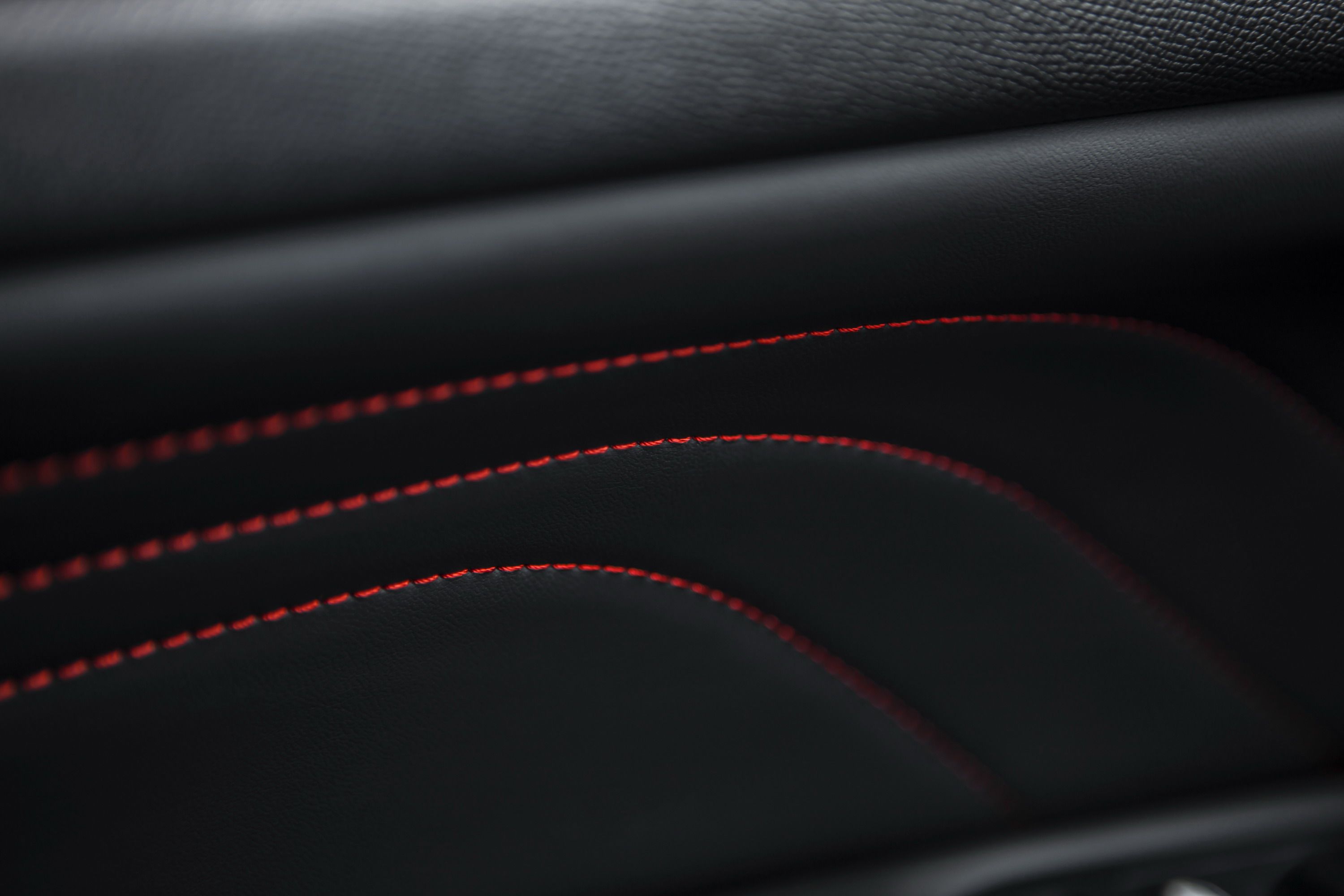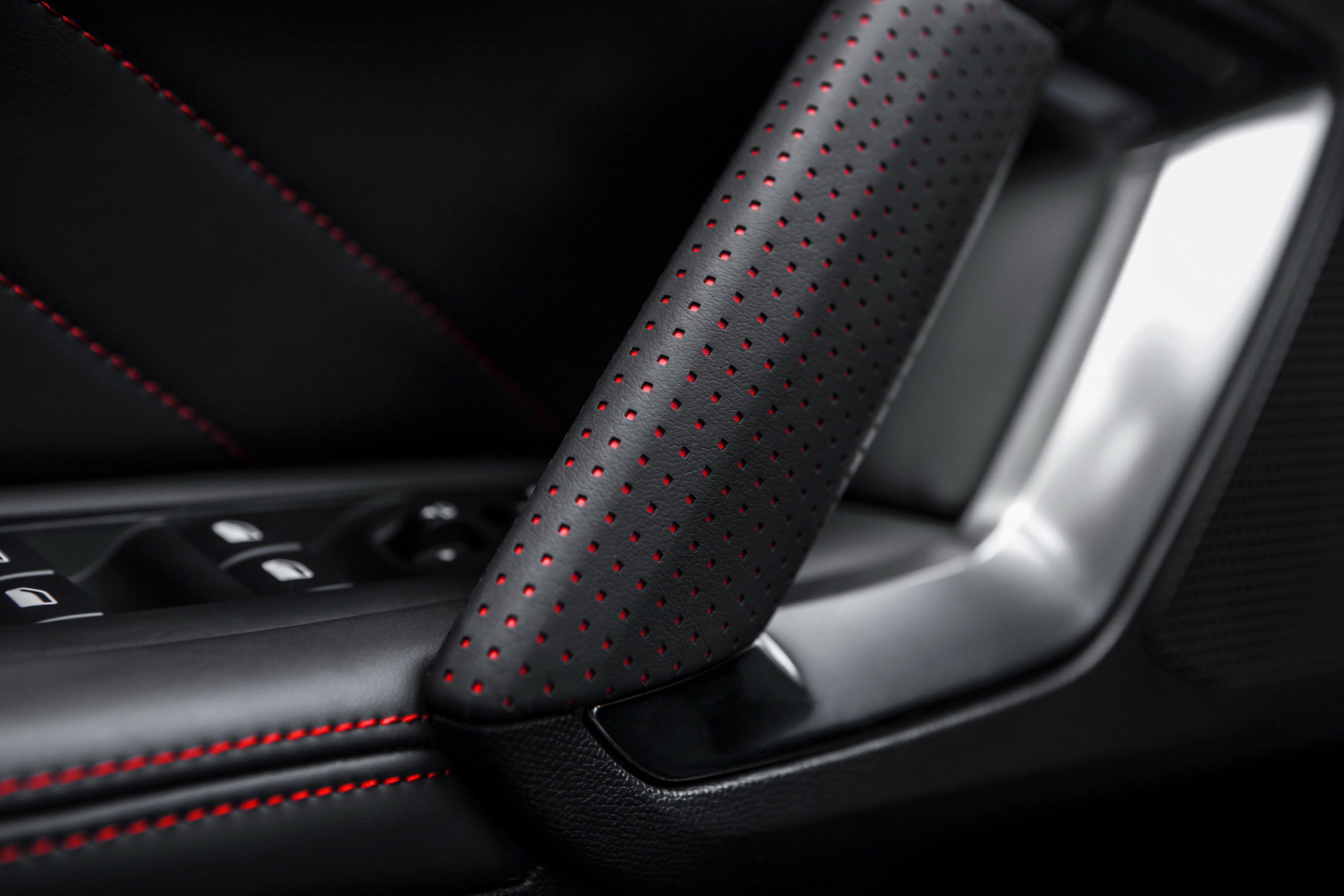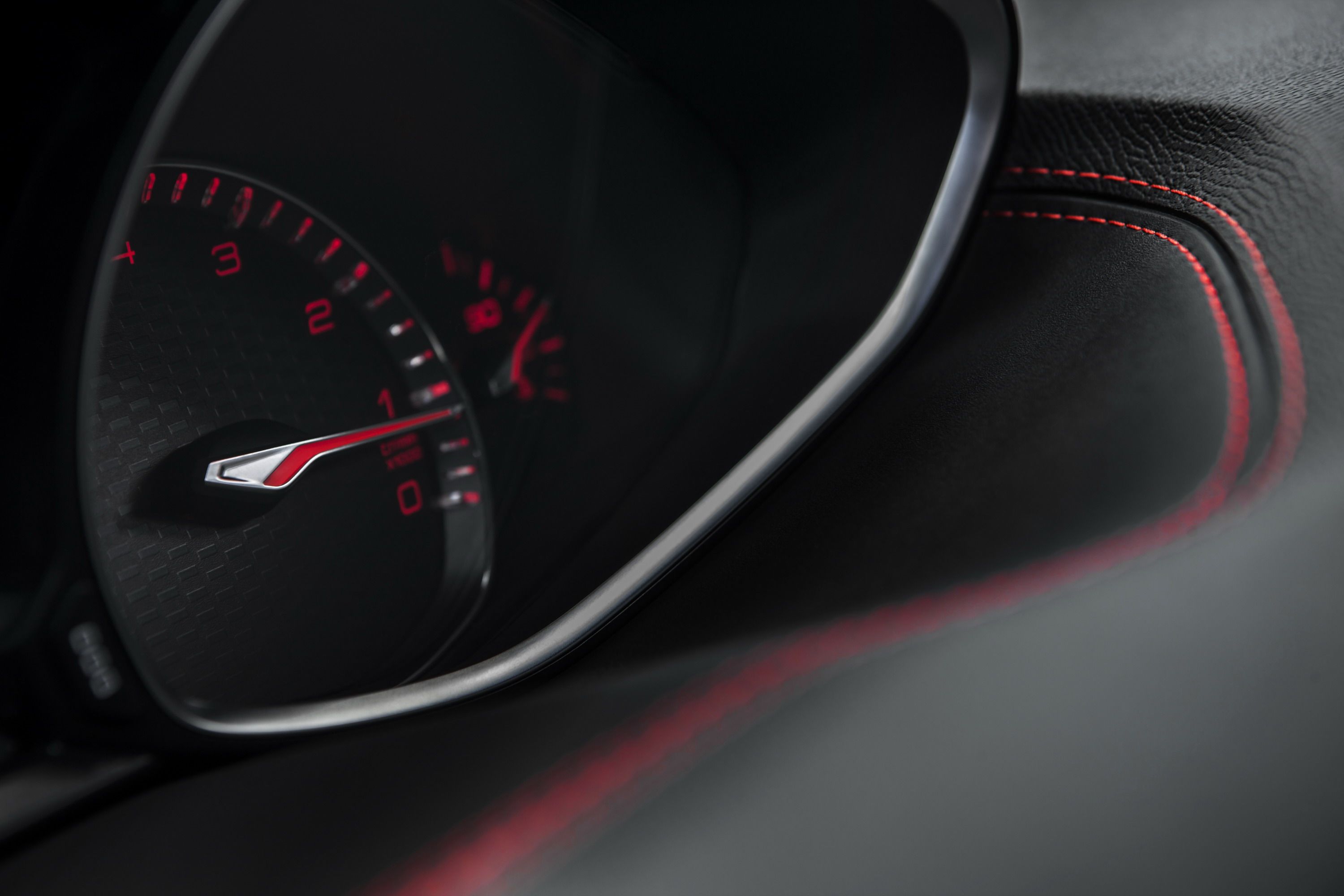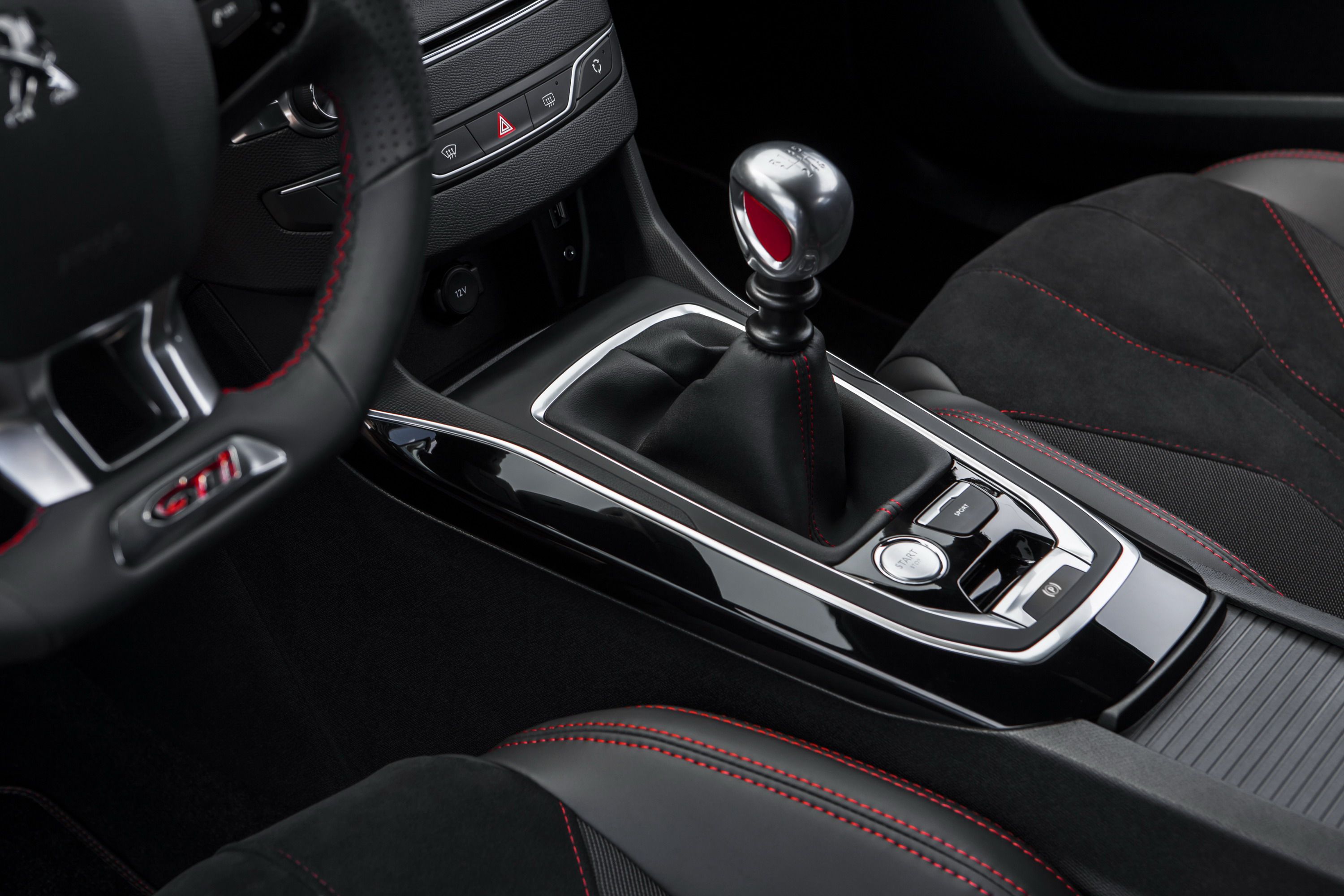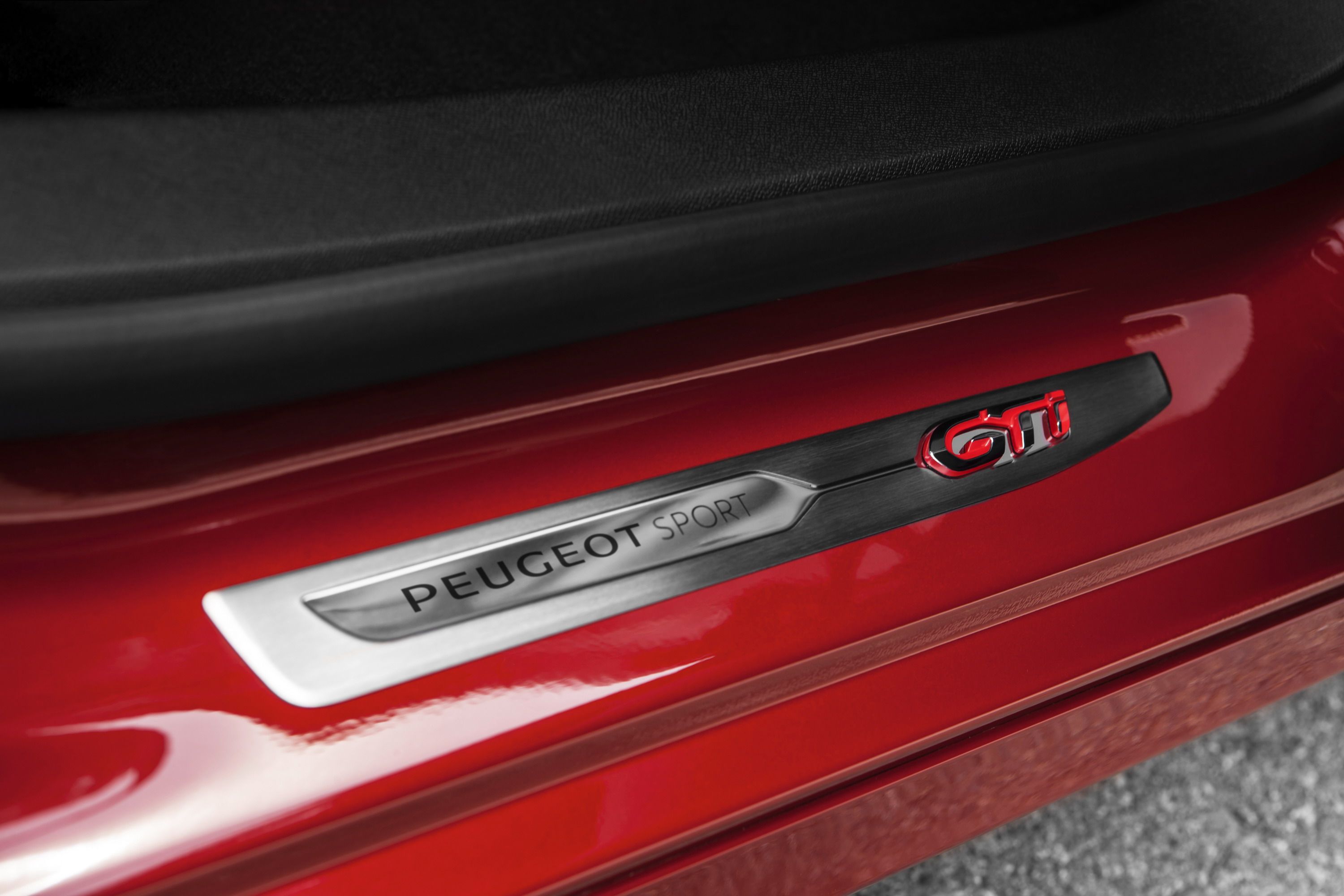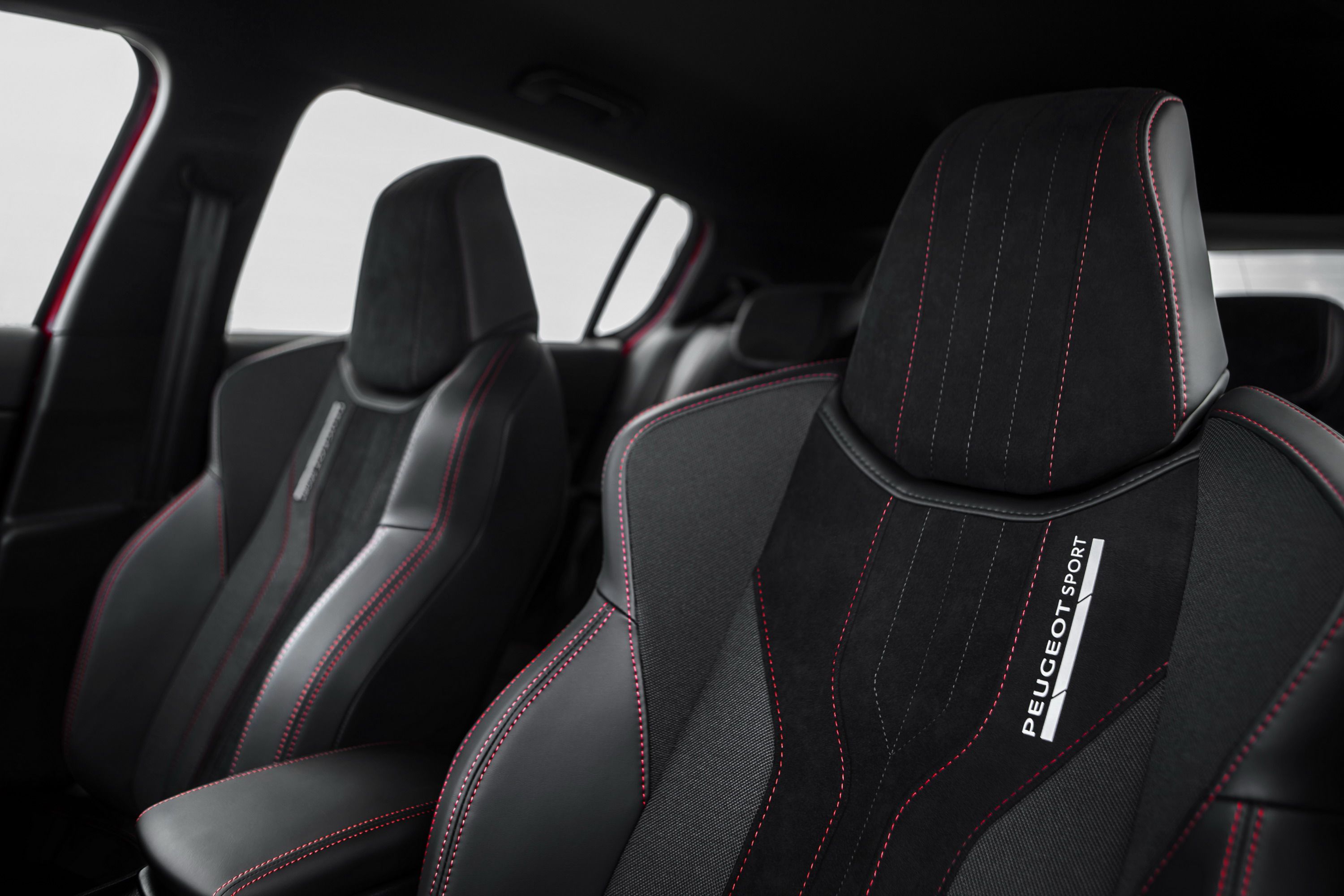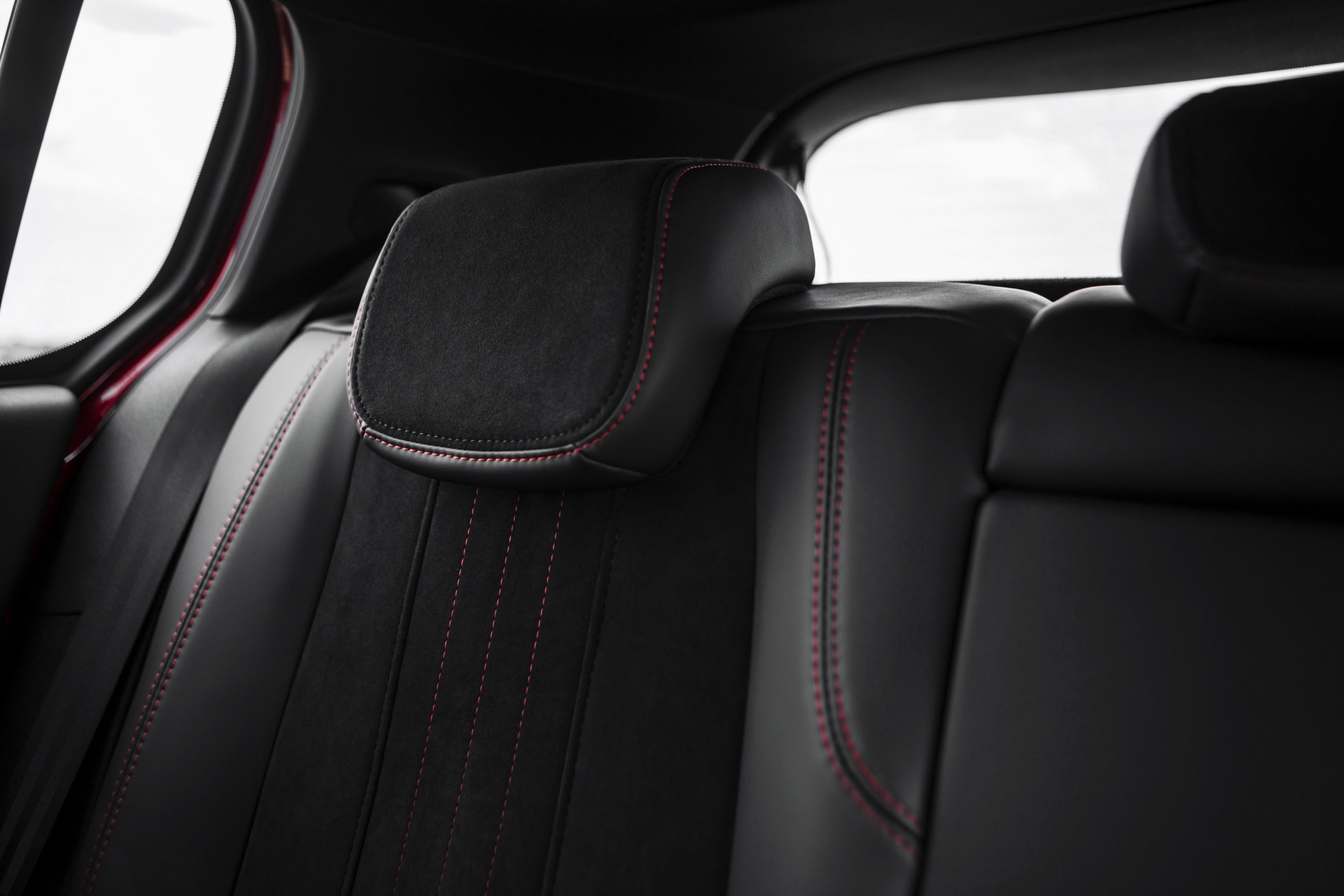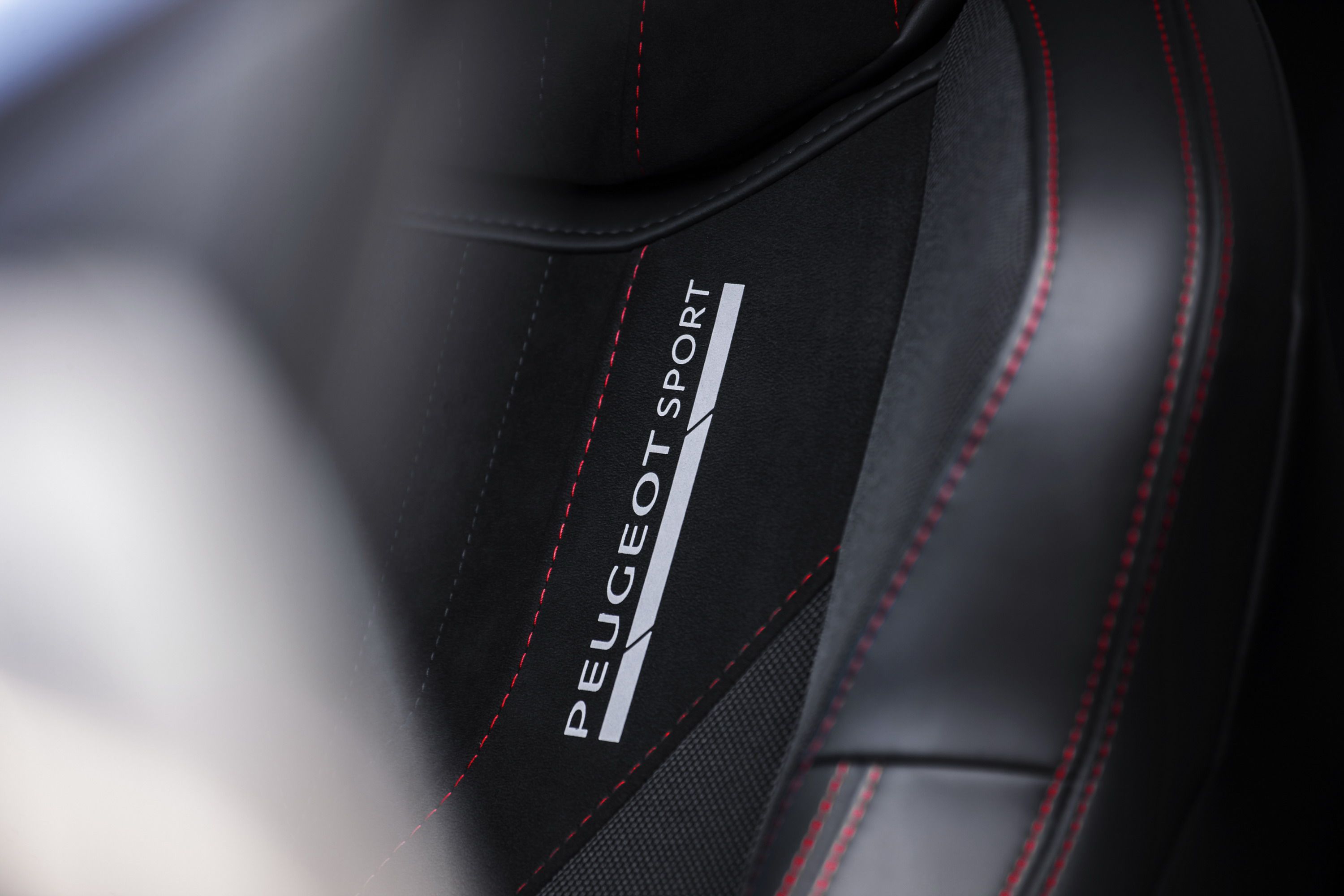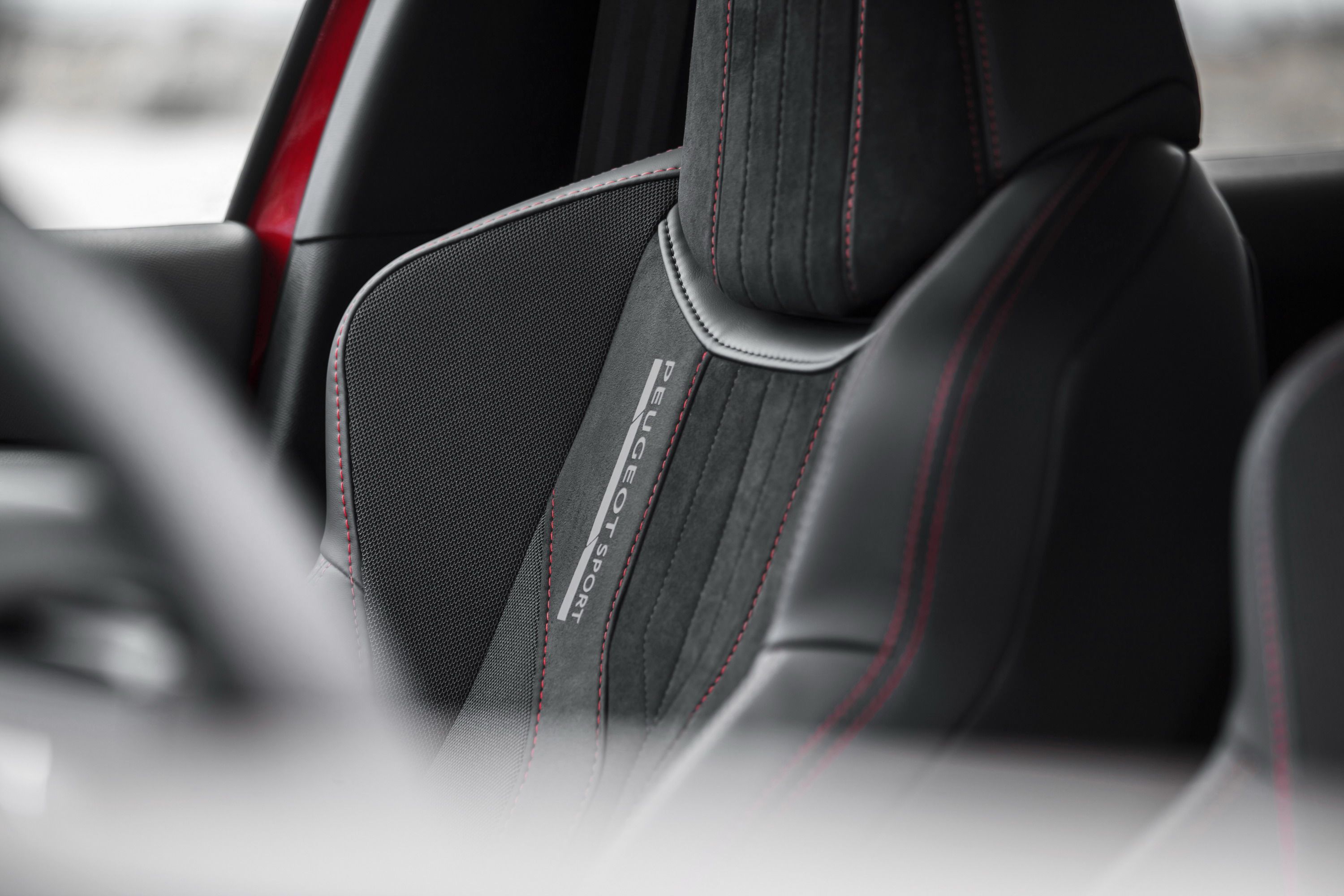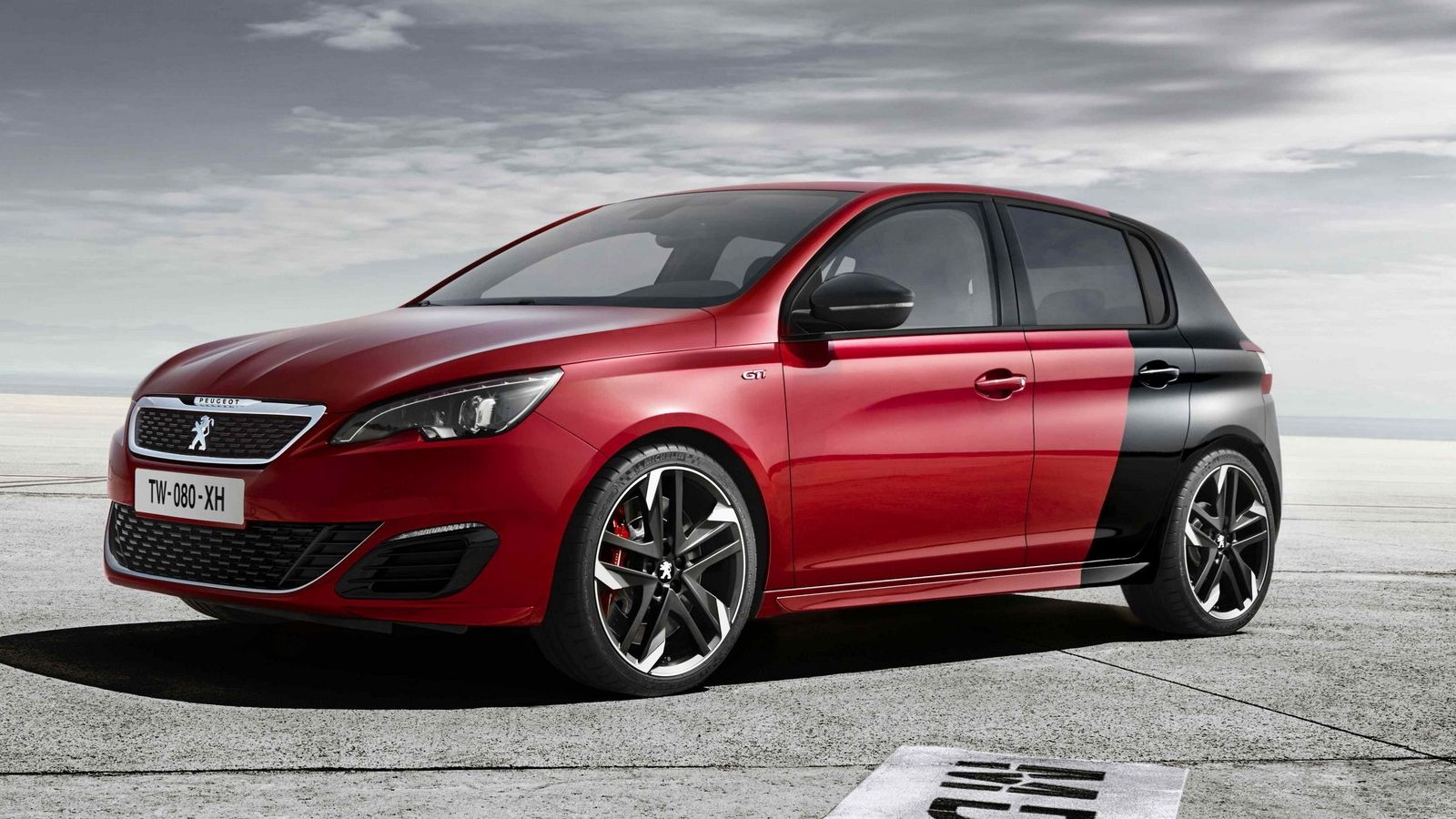Peugeot->ke68 has once again stepped up its hot-hatch->ke304 game with the release of the new 308 GTi, which brings an ultra-efficient turbocharged 1.6-liter engine available in two levels of tune, an enhanced exterior aesthetic, and an interior chock full of performance cues.
Inspired by Peugeot's extended GTi pedigree, the beefy five-door sees upgrades in all areas; some subtle, some less so, but all in the name of standing out in a market awash with hot-hatches.
Peugeot Brand CEO Maxime Picat says the car has created a good deal of excitement among performance enthusiasts, especially those familiar with the brand’s history of turning out quick cars with an odd number of doors. The 308 GTi follows the likes of the 205 GTi, 208 GTi, and RCZ R, all of which have contributed to the automaker’s claim of selling 800,000 units of its “sportier models.”
It all sounds great, but with so many fantastic hot-hatches to choose from, how does the 308 GTi stack up?
Continue reading to learn more about the Peugeot 308 GTi.
2015 Peugeot 308 GTi
- Make: Array
- Model: 2015 Peugeot 308 GTi
- Engine/Motor: inline-4
- Horsepower: 246
- Torque: 244
- Transmission: six-speed manual
- [do not use] Vehicle Model: Array
Exterior
Placed next to the standard 308->ke2264 model, the 308 GTi isn’t a dramatic diversion from its more reserved counterpart, at least aesthetically speaking. The clean, simple lines are still present and un-muddled, and onlookers will have an easy time identifying the vehicle as a part of the 308 line.
However, that isn’t to say Peugeot left the exterior completely untouched. First indications to the car’s sporting intentions come with the ride height, which sits 11 mm (0.43-inch) lower than the standard 308. In the front is the same familiar fascia, with double grilles lined with chrome, but these have been enhanced with exclusive inserts bearing a horizontal, checkered pattern finished in glossy black. Flanking these are headlights fitted with full LEDs. Jutting from the bottom corners of the front bumper you’ll find two subtle spoiler winglets, which Peugeot claims “boost aerodynamic performance.”
Moving to the side, it’s the same story, with the standard lines enhanced by a few simple things like redesigned side skirts that bring the car visually closer to the ground. In the rear, the GTi’s performance intentions are a bit more obvious, with a gloss-black lower diffuser framing twin exhaust tips that stick out prominently with a polished finish.
The car also boasts a wider track, measured at 1,570 mm (61.81 inches) in the front and 1,554 mm (61.81 inches) in the back. To help take advantage of the new stance, the GTi has lightweight alloy wheels and sticky performance tires. The GTi 250 variant receives 18-inch Diamant wheels wrapped in 225/40 R18 92W Michelin Pilot Sport tires, while the GTi 270 gets 19-inch Carbone alloys with 235/35 R19 91Y Michelin Pilot Sport tires. Under these rollers you’ll find appropriately flashy brakes, with big discs clamped by multi-piston calipers that are painted bright red and decorated with the Peugeot Sport signature flourish.
Like the standard 308, the GTi is rather feathery on the scales, thanks to the use of PSA’s EMP2 platform, which is complemented by a composite tailgate and the use of high-tensile steel. However, you won’t find additional pounds shed over the standard car, with the final curb weight coming in at roughly 2,650 pounds. Still, that’s quite sprightly when placed alongside the Peugeot’s major competitors (the 2015 Volkswagen Golf GTI, for example, weighs in at over 3,000 pounds).
For paint options, there is a Coupe Franche two-tone design available exclusively for the GTi 270. This combines the bright Ultimate Red hue with Nera Black to visually cut the car in half, lending it a handsome three-door impersonation. The two-tone definitely gives the car a healthy dose of sportiness and boy-racer aggression, but it doesn’t come cheap – expect to shell out an extra £1,300 ($2,062) if you want it.
Other color choices include full-body Ultimate Red, full-body Nera Black, Pearlescent White, Magnetic Blue, and Cumulus Grey. The standard color is non-metallic Hurricane Grey.
Interior
The interior of the 308 GTi comes with the usual assemblage of high-performance cues, both subtle and overt, that you’d expect from a modern hot-hatch. Red stitching is used to offset the black upholstery found throughout the cabin, including in the seats, door panels, steering wheel, gear-lever boot and floor mats. The doorsills have the requisite GTi and Peugeot Sport signatures, and are made from aluminum. Aluminum is also used for the pedals, footrest and gear knob.
The top-range GTi 270 is equipped with Peugeot Sport bucket seats that are upholstered in black and grey Alcantara, providing good lateral support. The steering wheel is small and slightly squared at the bottom, and comes wrapped in full-grain leather, with the GTi logo below and a red center-mark up top.
Instrumentation comes in the form of a central digital readout flanked by two analog gauges with a black-checkered background. It’s all part of the Peugeot i-Cockpit design, which Peugeot says “...has been an integral aspect of the 308’s appeal and sales success.” For the 308 GTi, the automaker has added a centrally mounted, driver-facing touchscreen complete with the Redline color scheme.
For those wanting even more race-car-driver fantasy inspiration, there’s the standard Driver Sport Pack. By pressing the Sport button on the central console, the display colors go from white to red and it provides performance data, including horsepower, torque, boost levels, and lateral/longitudinal acceleration. It also beefs up the exhaust note and switches up the throttle mapping “...for a more engaging driving experience.”
Drivetrain
Unlike the majority of hot-hatches currently on the market, almost all of which use boosted 2.0-liter powerplants, the 308 GTi makes do with a 1.6-liter Turbo High Pressure (THP) gasoline unit. This comes in two different levels of tune – 250 horsepower and 270 horsepower (hence the GTi 250 and GTi 270 trim designators). Both produce 243 pound-feet of torque at an impressively low 1,900 rpm and are connected to a manual six-speed transmission.
Peugeot claims the top-spec 270-horsepower version “...sets a new record for power-to-weight ratio in its segment,” with each horsepower tasked with motivating only 4.46 kg (9.83 pounds). This enables a 0-to-62 time of six seconds flat. The GTi 250 will do the same run 0.2 second slower, while both cars are electronically limited to a top speed of 155 mph.
Given the engine’s high output, RON 95 or RON 98 fuel (RON being the Research Octane Number) is required. Injection pressure is set at 200 bar, while the compression ratio is 9.2:1. The engine internals are pretty trick, including forged aluminum pistons “of a competition-style design,” strengthened connecting rods, polymer-enhanced bearings, and reinforced bolts. Max torque is provided all the way up to 5,000 rpm.
Keeping the internal combustion operation cool and smooth is a double-oil spray system for the pistons, while the exhaust manifold is composed of heat-resistant steel that can handle temperatures up to 1,000-degrees Celsius (1,832-degrees Fahrenheit). A specially developed air-cooling system is also installed below the front bumper.
Even though the engine puts out a decent wallop, the low displacement means your tree-hugger friends won’t disown you for laying into the throttle every so often. Peugeot claims the Euro 6-compliant 1.6-liter mill is “the most efficient in its sector,” producing just 139 g/km of CO2 emissions and netting 47.1 mpg. These numbers are bolstered by Stop&Start technology, a standard feature on all 308 GTi models.
But enough of all that, let’s get back to the stuff that actually matters. Those flamboyant brakes you see tucked under the oversized wheels come with “race-developed” 380 mm (15-inch) discs in front, mounted to aluminum hubs. The bright red calipers are four-piston units, while the rear sees discs measure at 268 mm (10.55 inches).
The suspension used is modest, with pseudo-MacPherson struts in the front and a twist-beam system in the rear. Complementing this is a semi-hollow anti-roll bar and aluminum wishbones. The entire vertical suspension in the front is specific to the new 308 GTi, with specially calibrated spring rates and shock absorbers.
While simple, lightweight, cheap to produce, and robust, this suspension setup doesn’t offer the same sophistication as a true multi-link system, often transmitting a good deal of noise and vibration into the cabin and offering less linear handling characteristics.
Vital to any high-performance FWD vehicle is a solid limited-slip differential, and the 308 GTi delivers with a Torsen unit for better grip under a heavy throttle. This works in conjunction with the power steering to offer improved handing (presumably with reduced torque steer), while a sport-oriented electronic traction control system makes the most of inputs. Peugeot says the system is designed to allow for “more latitude, with enhanced drift on bends.” Those confident in their own abilities can opt to disconnect the system altogether.
Drivetrain Specifications
|
Type |
1.6-liter, 4-cylinder turbocharged |
|
Output |
246 HP or 268 HP |
|
Torque |
244 LB-FT |
|
Transmission |
six-speed manual |
|
0 to 60 mph |
6.2 seconds |
Prices
The 308 GTi 250 starts at £26,555 ($42,112 at current exchange rates, 6/15) while the 308 GTi 270 starts at £28,155 ($44,649). Peugeot says both models will be available to order soon.
Competition
2016 Honda Civic Type R
The latest-generation Civic Type R comes with all the bells and whistles you’d expect from the leading Japanese hot-hatch. Under the hood is a new turbocharged, 2.0-liter engine with a 7,000-rpm redline, 306 horsepower, and 295 pound-feet of torque. When properly applied through the front wheels, it’s good for a sprint to 60 mph in 5.7 seconds. Drivers will also enjoy Honda’s->ke34 notchy six-speed manual transmission, while Dual Axis Struts in the front suspension help smooth out the ever-present torque steer. The exterior is traditional hot hatch, with big aero and big wheels announcing the Type R’s presence with not-so-subtle flair. Pricing will be in the £30,000- ($47,575-) range (probably cheaper in the U.S.).
Read our full review here.
2015 Ford Focus ST
Originally launched in Europe in 2005, the current Focus ST brings a few tweaks to keep it modern, including new headlights and a restyled grille. Powering the Focus->ke440 is a turbocharged 2.0-liter four-cylinder with 250 horsepower and 270 pound-feet of torque driving the front wheels via a six-speed manual transmission. A sprint to 60 mph takes roughly six seconds. The suspension is stiffened, with the torque vectoring and electric power steering both receiving updates as well. Pricing starts at around £22,000 ($25,245 in the U.S.), but rises quickly with higher trim levels, including the £26,000 ST3 (priced at roughly $30,000 in the U.S.).
Read our full review here.
2015 Volkswagen Golf GTI
Now in it’s seventh generation, few vehicles have enjoyed the staying power exhibited by the Golf GTI.->ke223 And that’s for good reason - this VW->ke94 mainstay offers refinement and sophistication often only found far above its price segment. However, performance is a bit modest compared to competitors, with motivation derived from a turbo 2.0-liter four-cylinder producing 210 horsepower and 258 pound-feet of torque, which nets a 0-to-60 time of 6.2 seconds when routed through the optional six-speed dual-clutch auto-box. A six-speed manual is standard. The interior boasts a range of standard equipment, while the suspension includes MacPherson struts up front and an independent multi-link setup in the rear. Pricing starts at £25,845 ($25,605 in the U.S.).
Read our full review here.
Conclusion
Peugeot says that from the very beginning of development, the 308 GTi was designed to be the “most radical” model in its class, as targeted customers would demand a driving experience second to none. Therefore, the development team sourced talent with a genuine passion for performance, calling in the brand’s expert Peugeot Sport engineers to lend their motorsport and racing experience to the car’s creation.
The result is a solid little car. But the question remains: why choose the 308 GTi over a Civic Type-R? Or Focus ST? Or Golf GTI?
The reasoning can be found in the details. Let’s start with the engine. The little 1.6-liter is stout in its top level of tune, but doesn’t pollute like the bigger 2.0-liter units. At six seconds to 60, it’s also decently quick. The suspension may be rudimentary, but the big brakes, sticky tires, and low curb weight should make it zip through the corners. The exterior is sporty-looking, but not ostentatious. The interior has some nice features, and enthusiasts will undoubtedly get a kick out of the gimmicky-yet-fun Driver Sport Pack. I’d like it if the price was a few grand cheaper, but I think Peugeot will get away with the stated MSRP.
Personally, I’d probably opt for the Civic,->ke236 but for Peugeot fans, the choice is already made.
Look for the 308 GTi to make its world debut at this year’s Goodwood Moving Motor Show and Festival of Speed,->ke3879 slated to run between June 25th and 28th.


